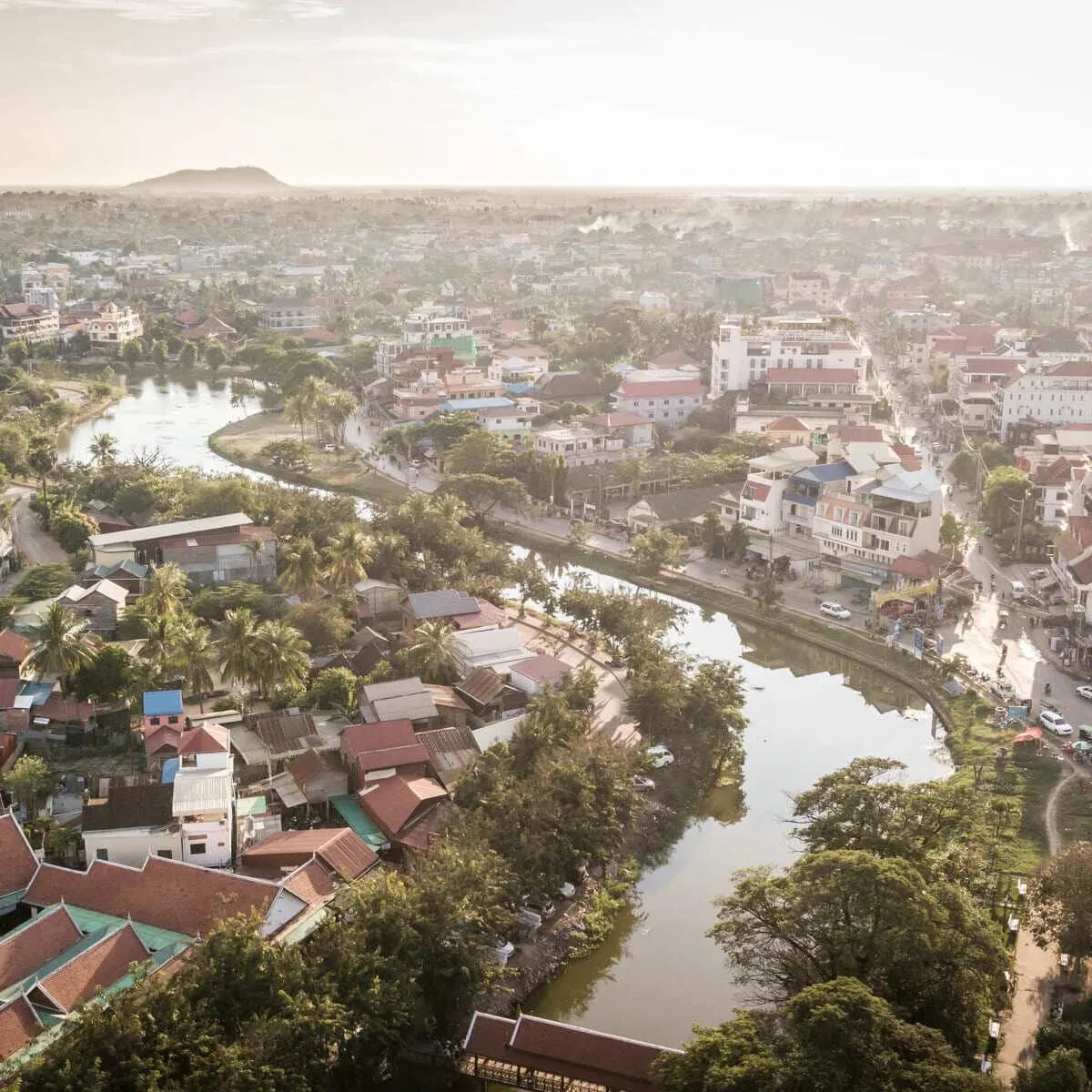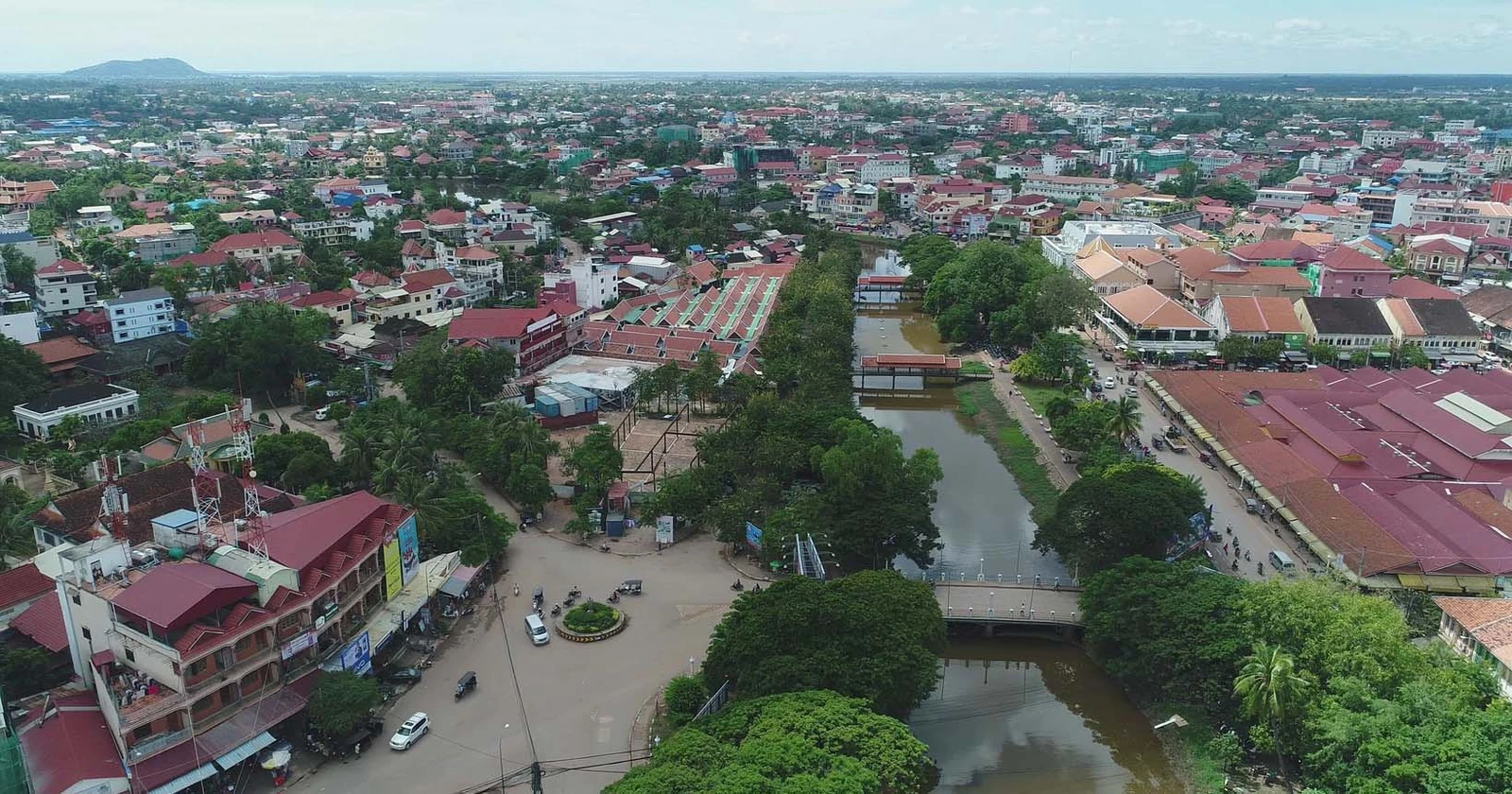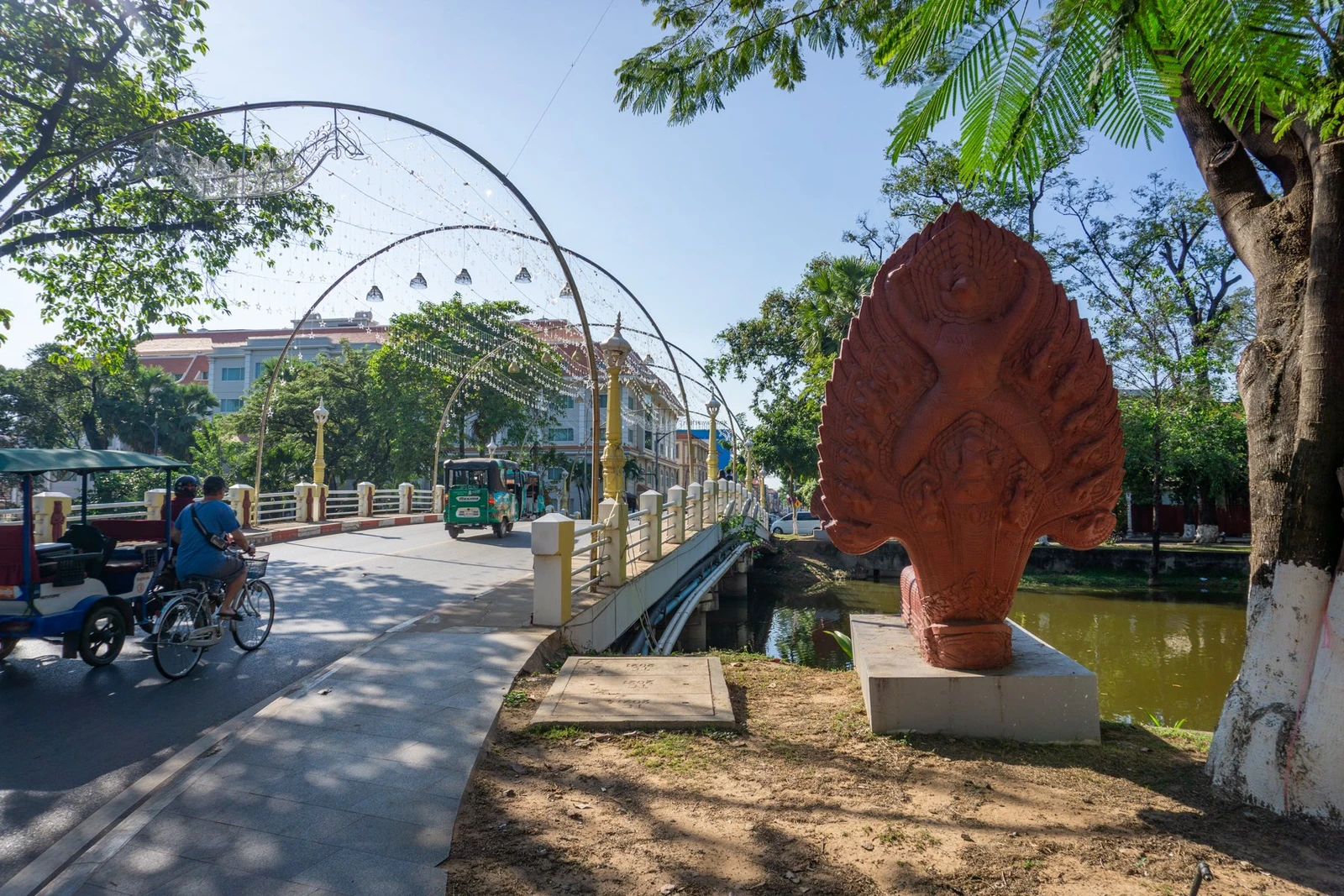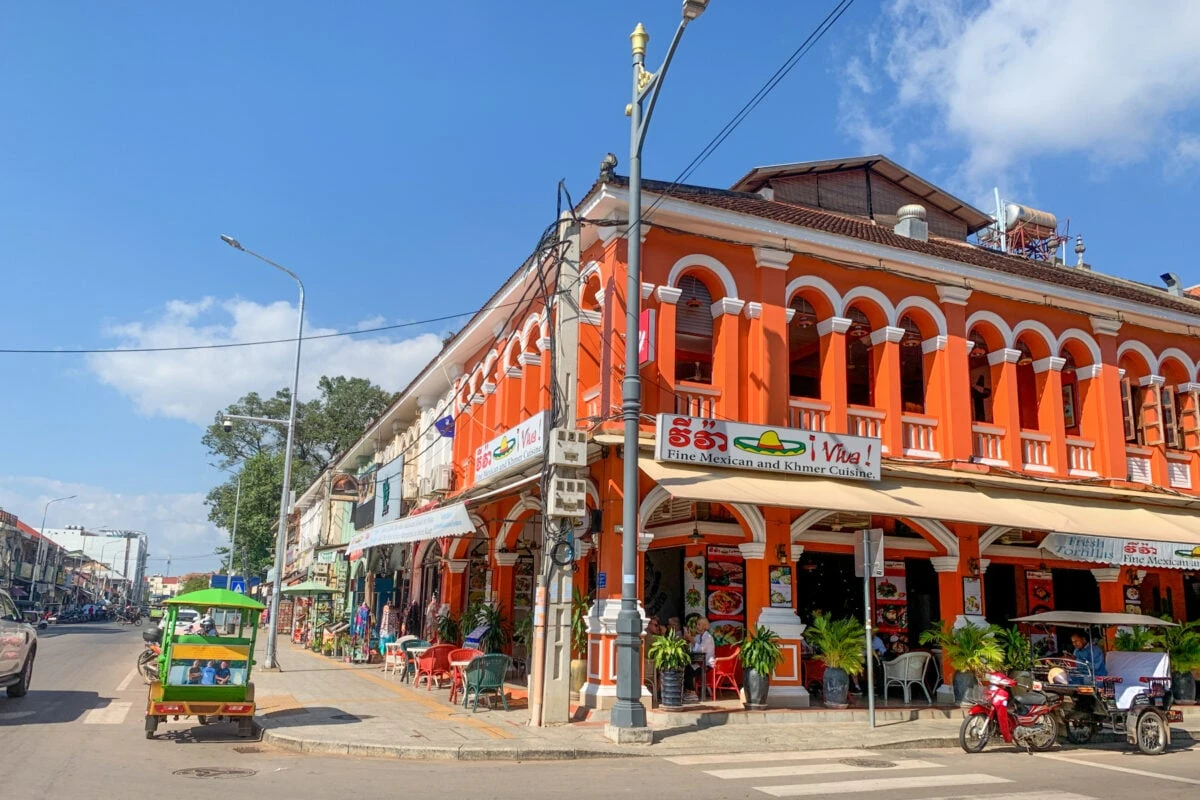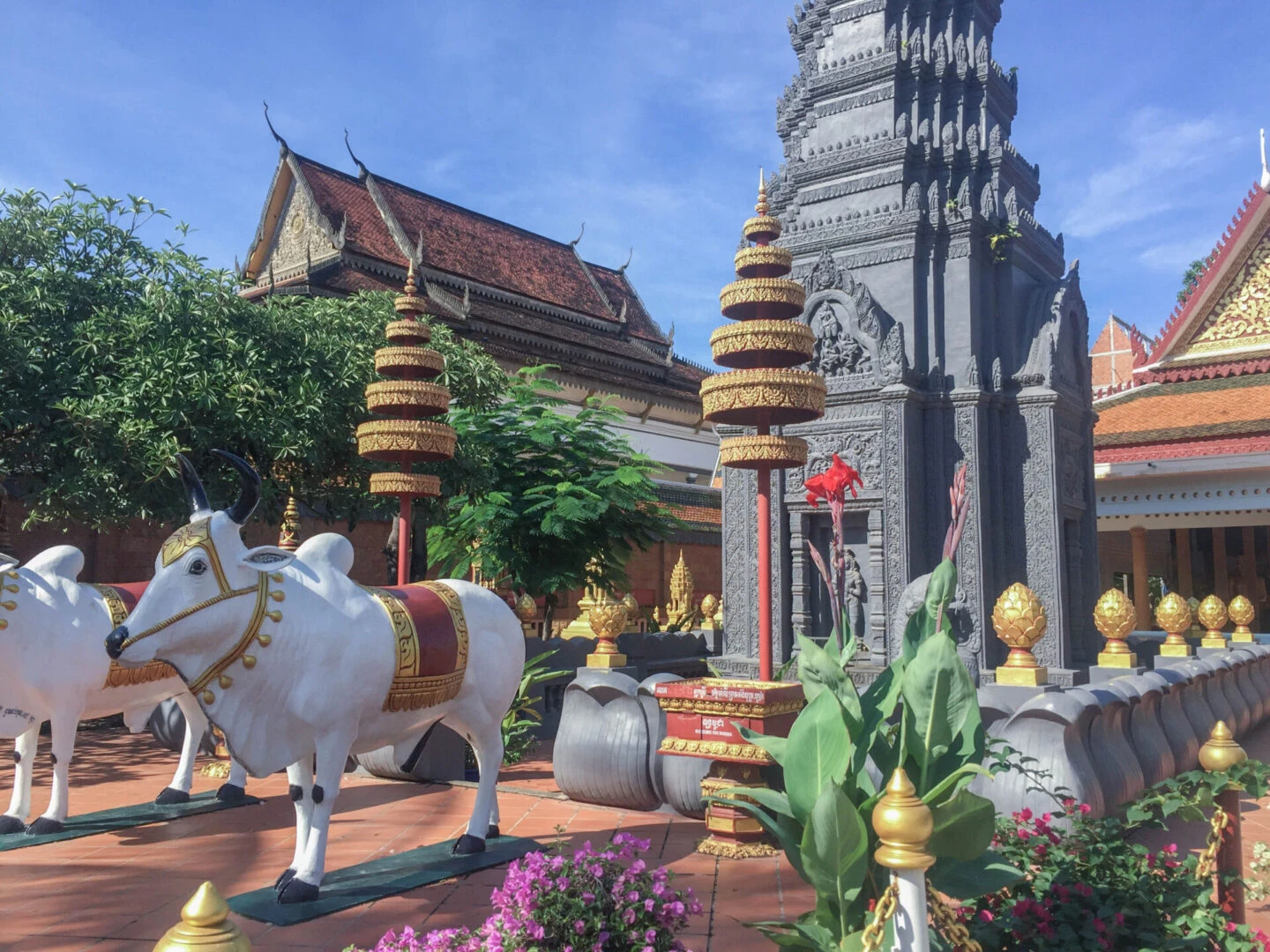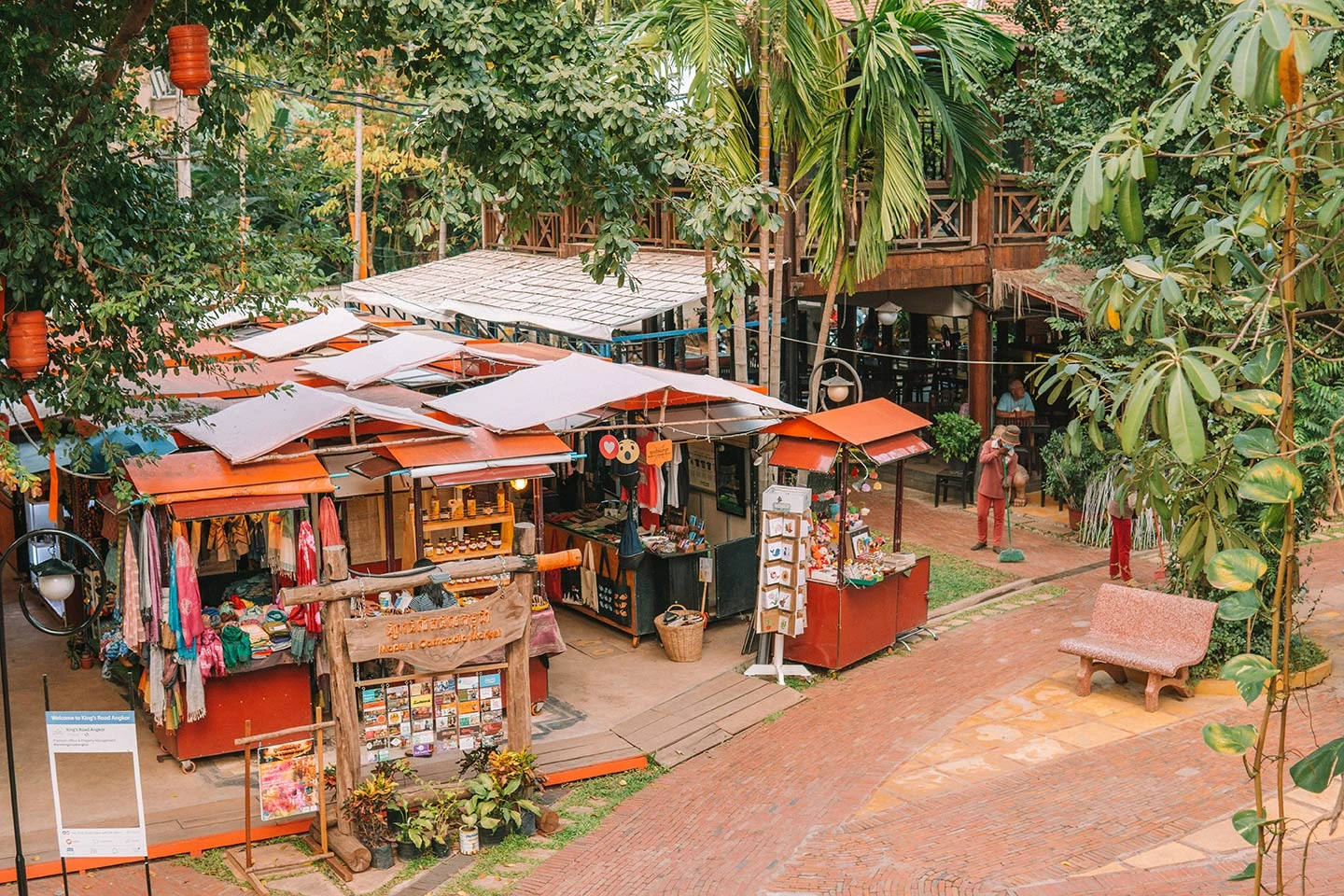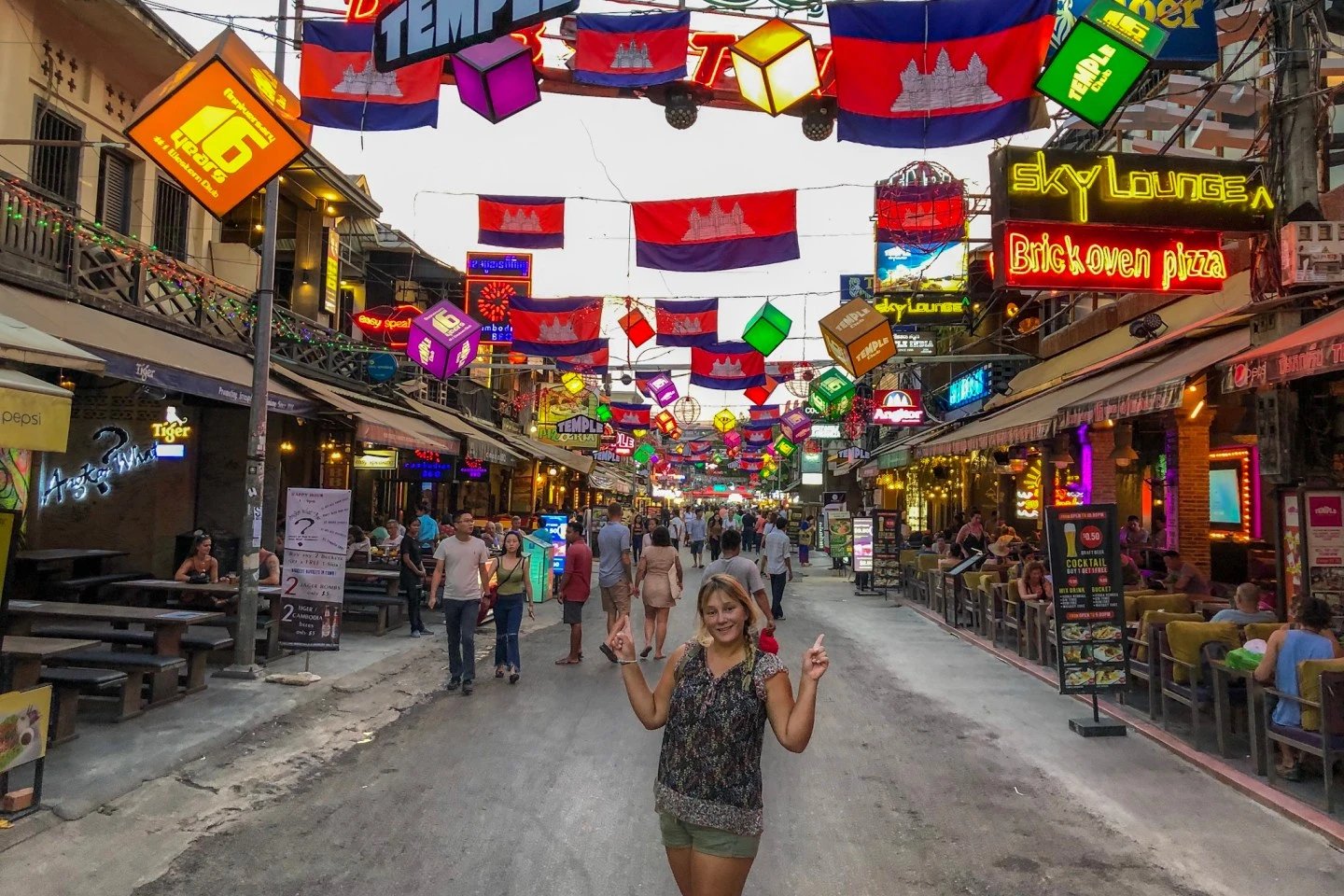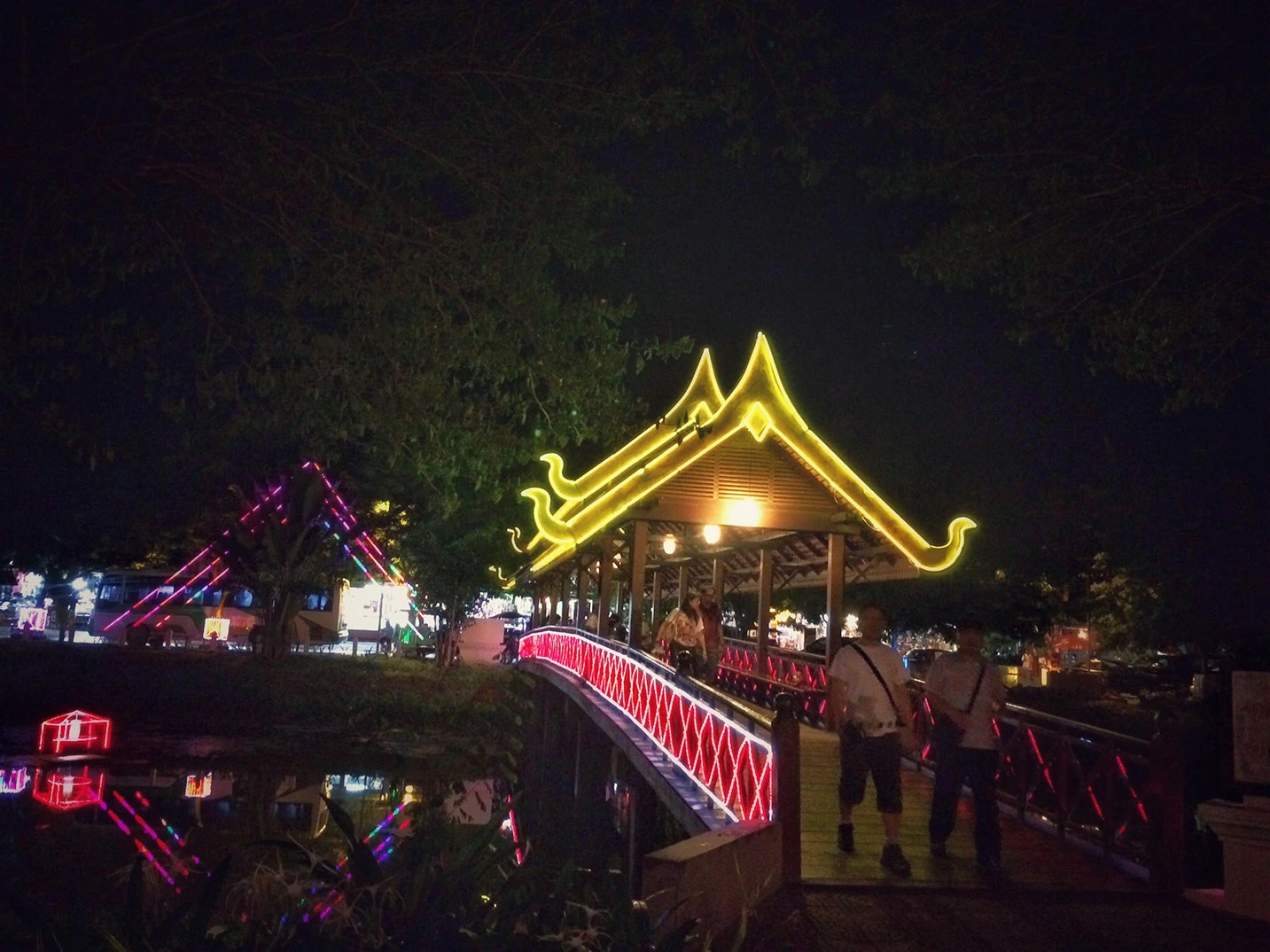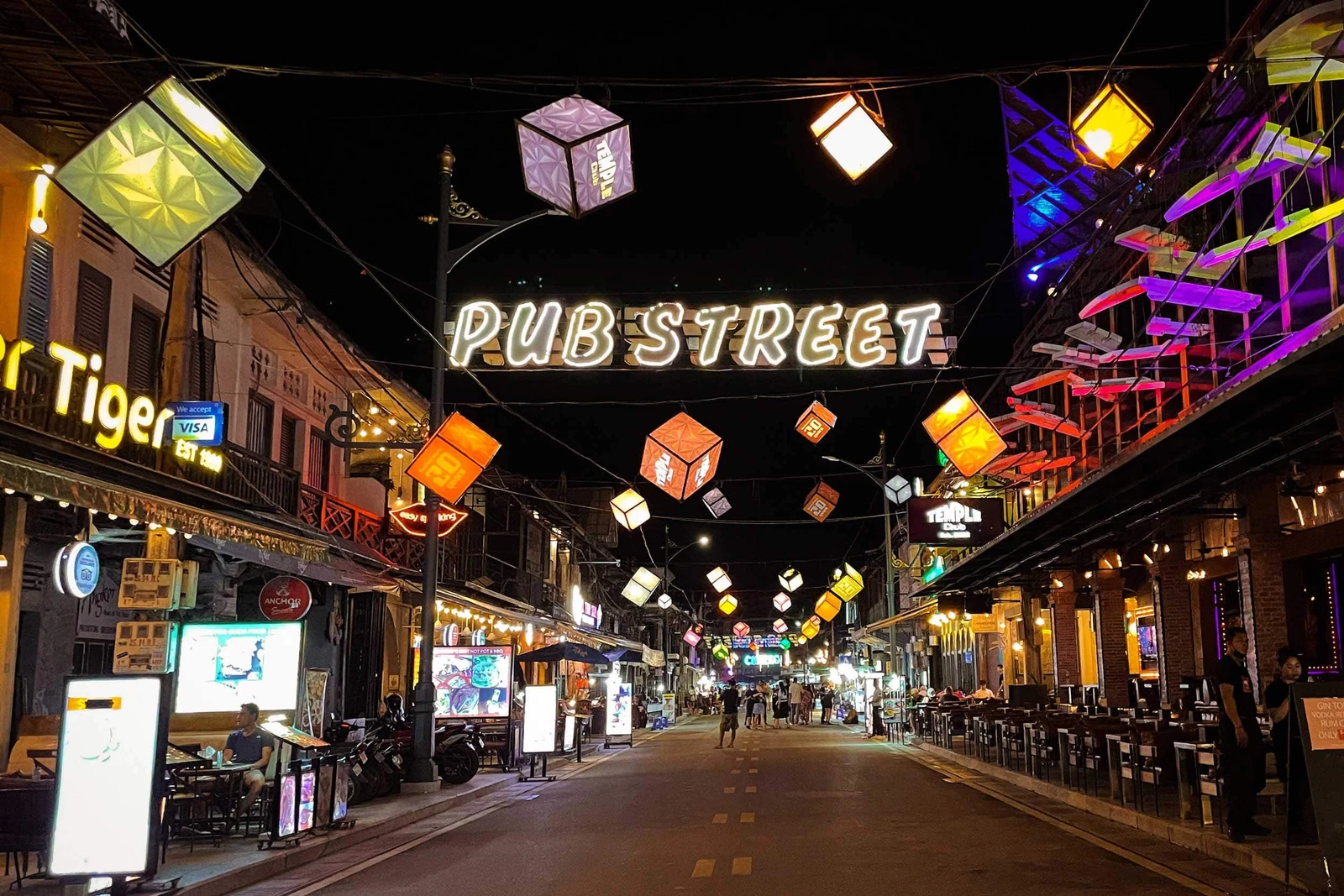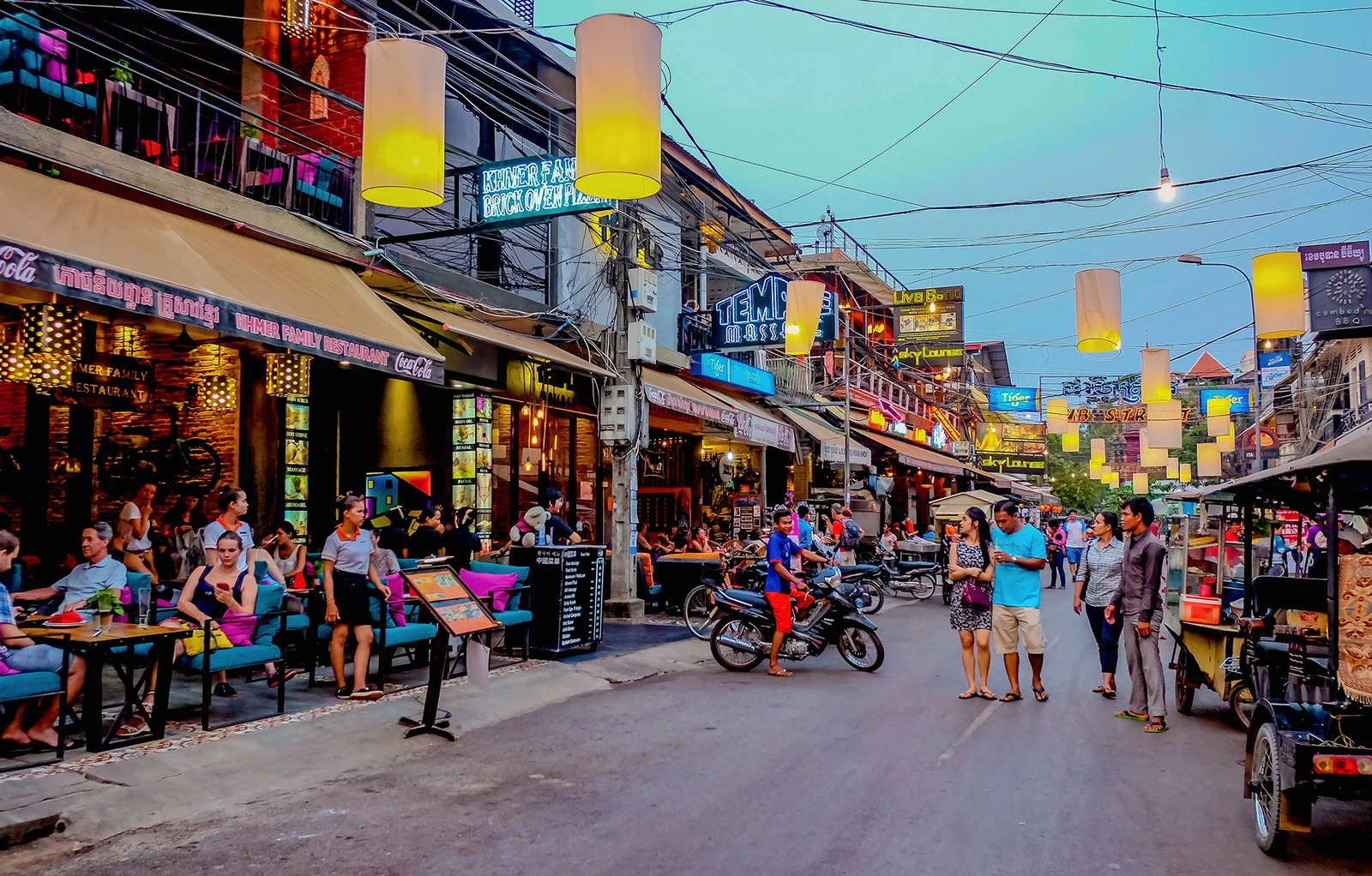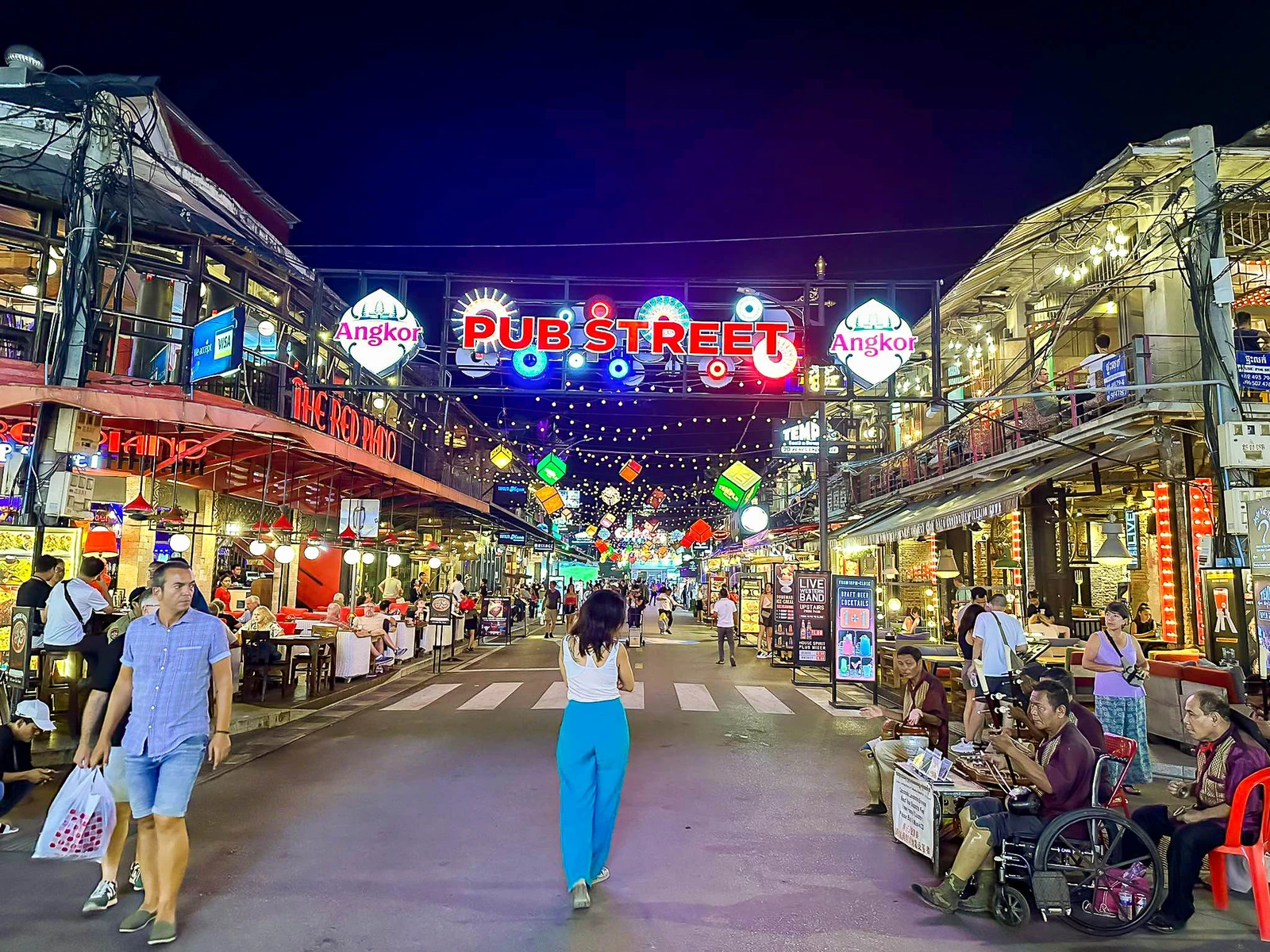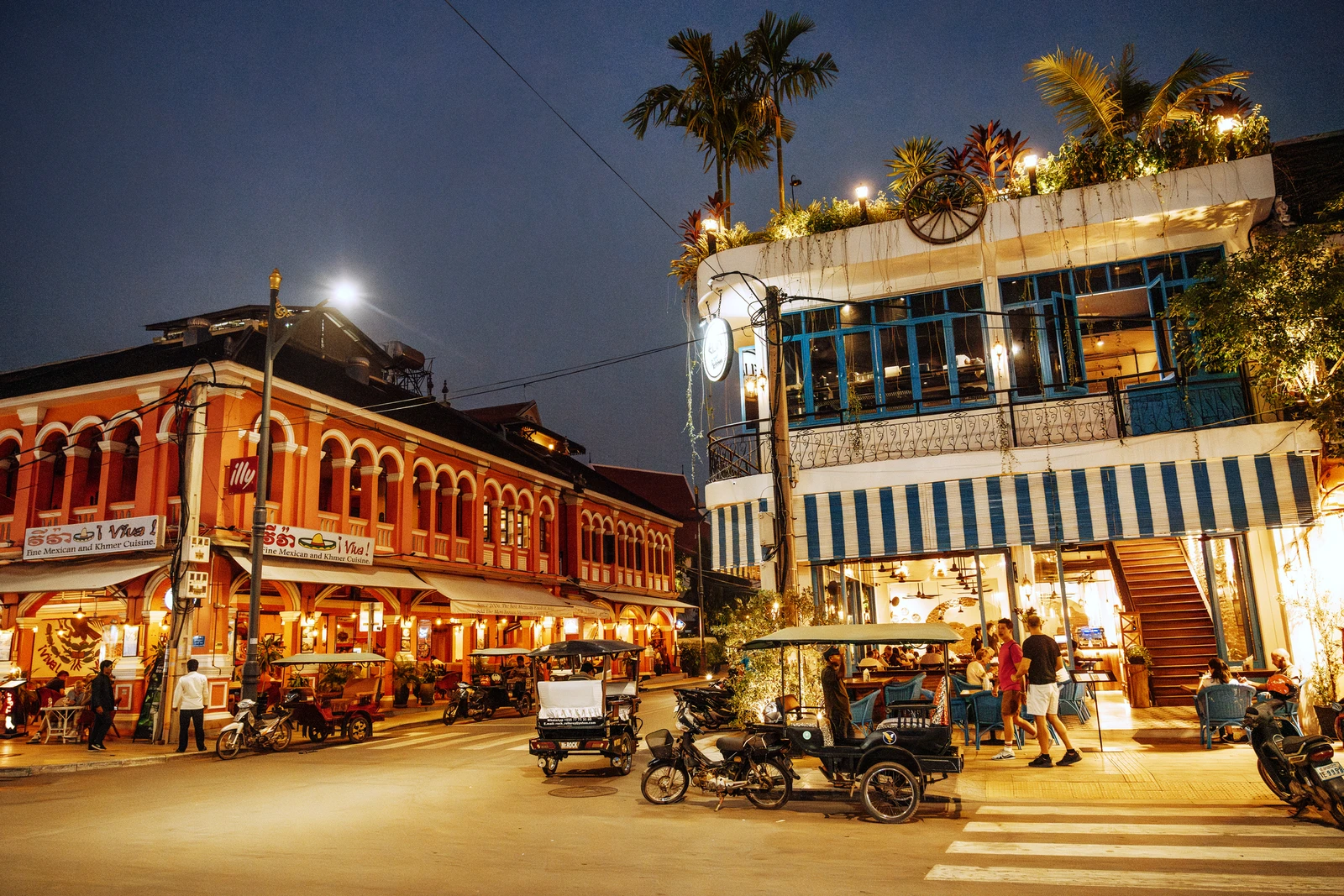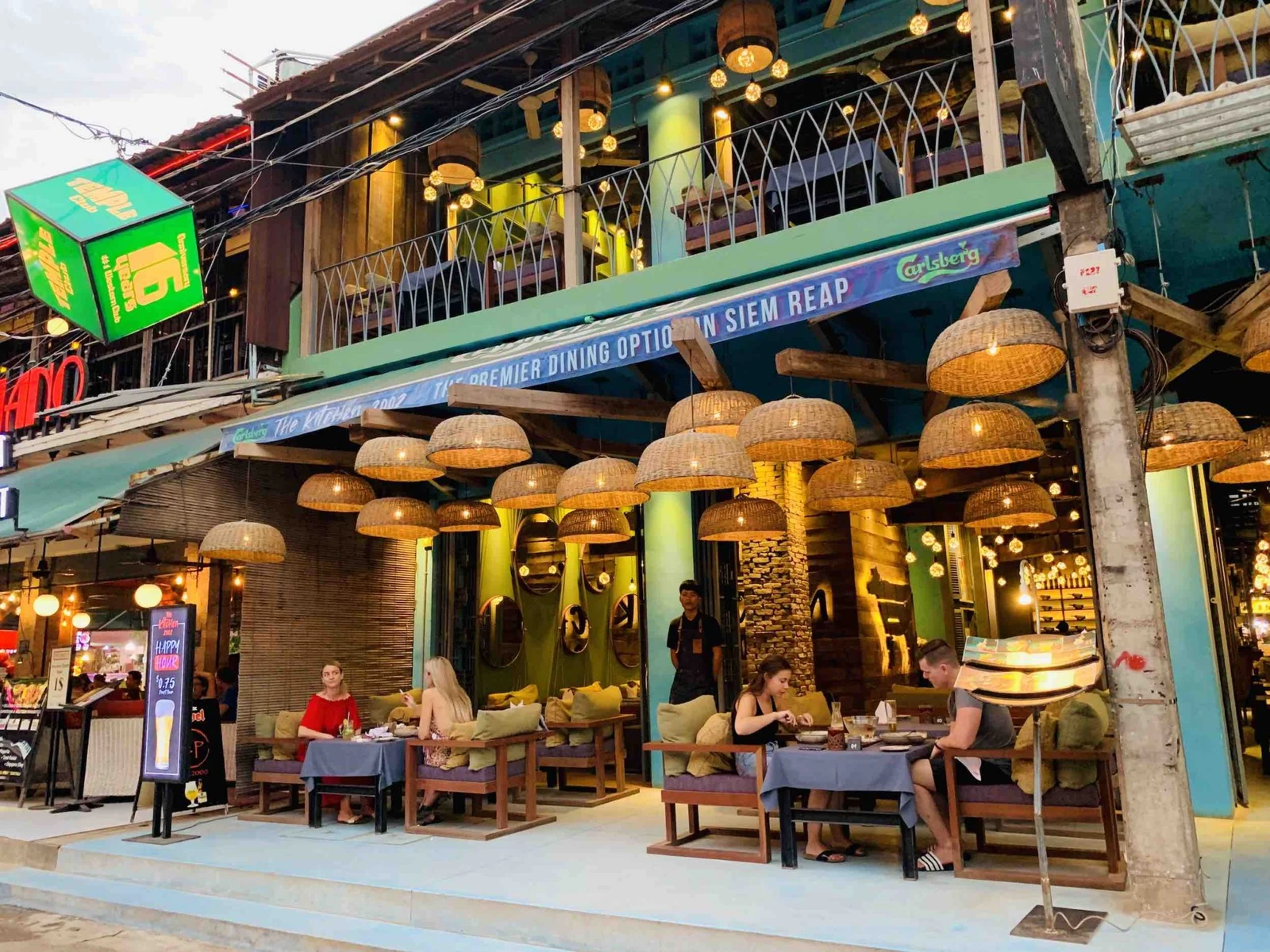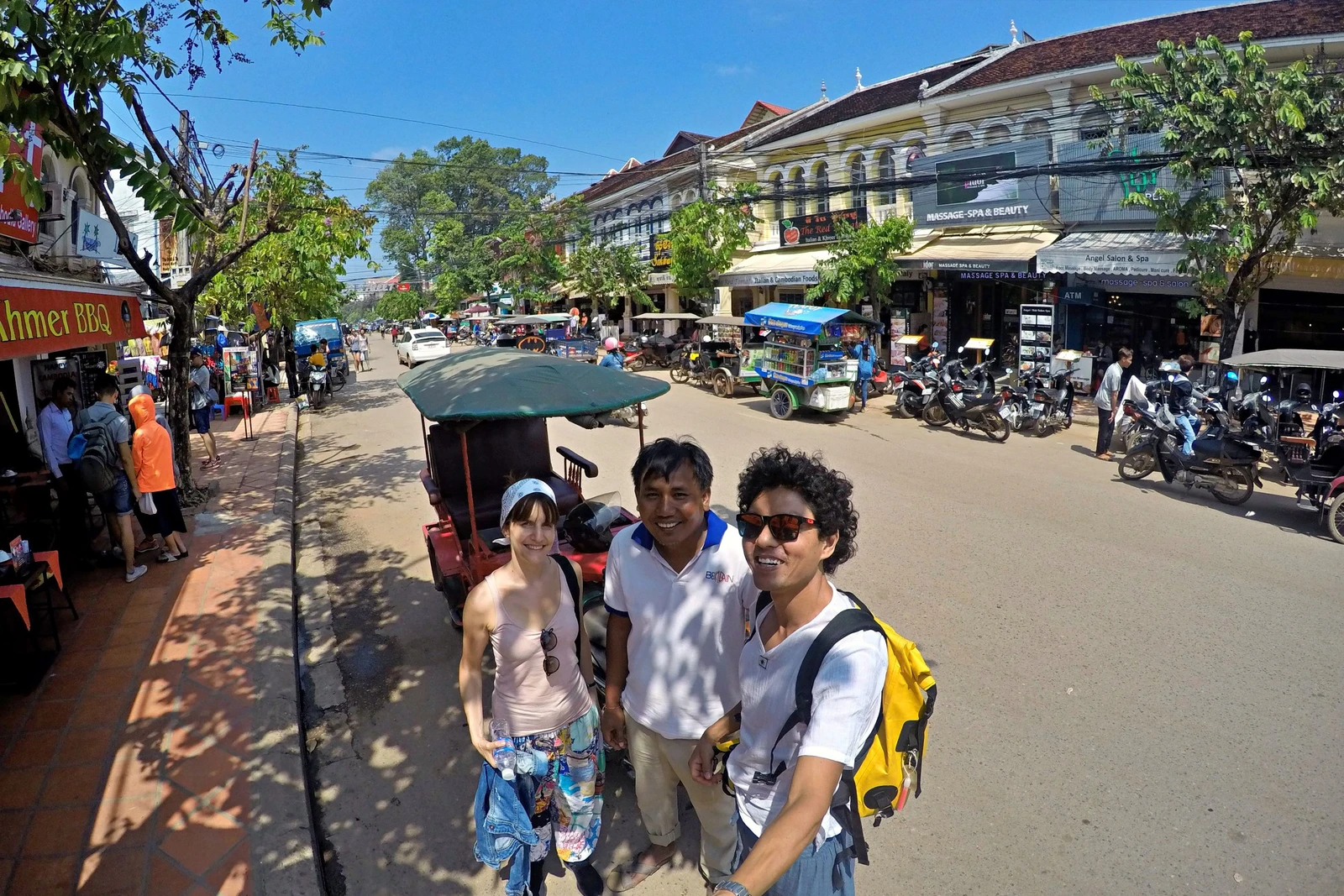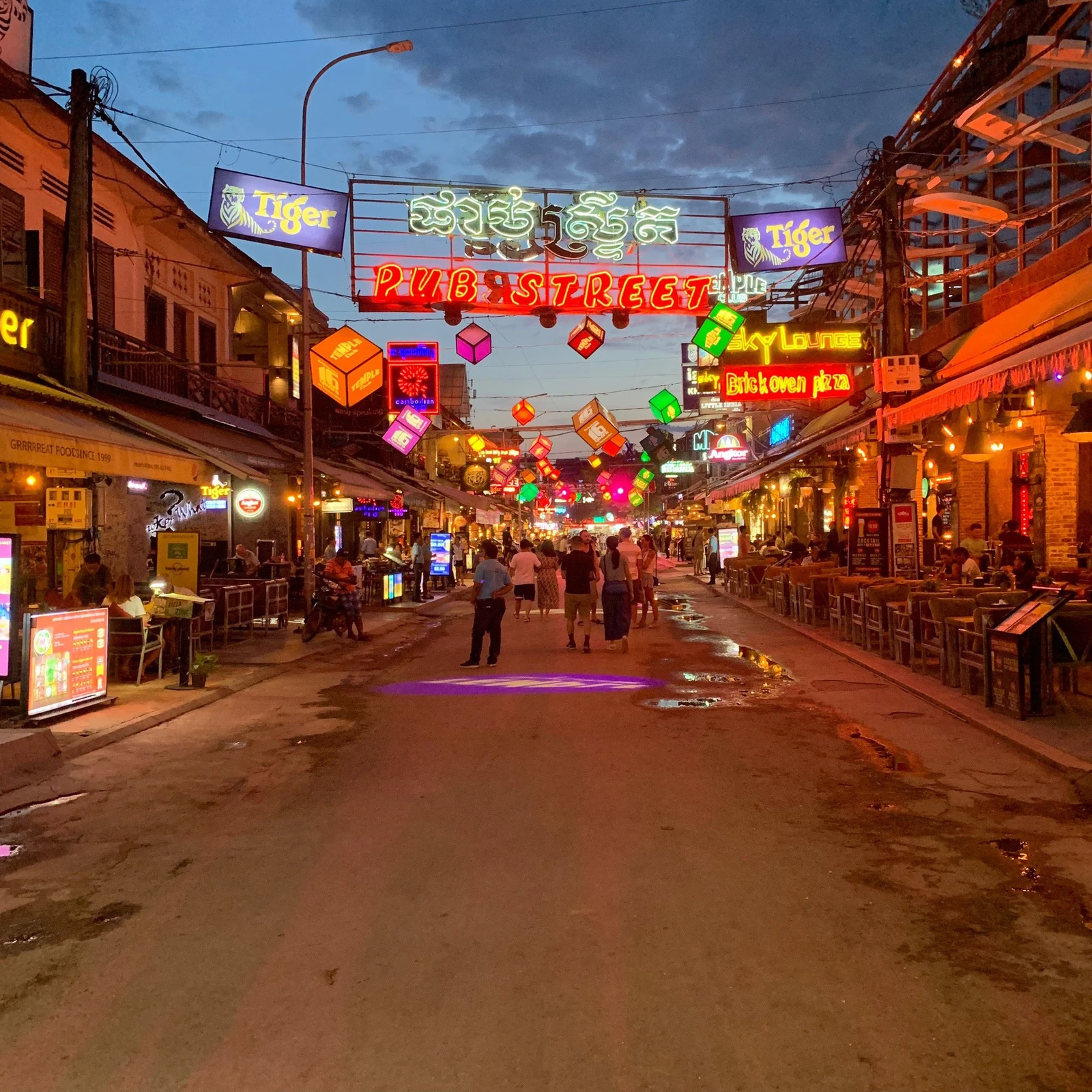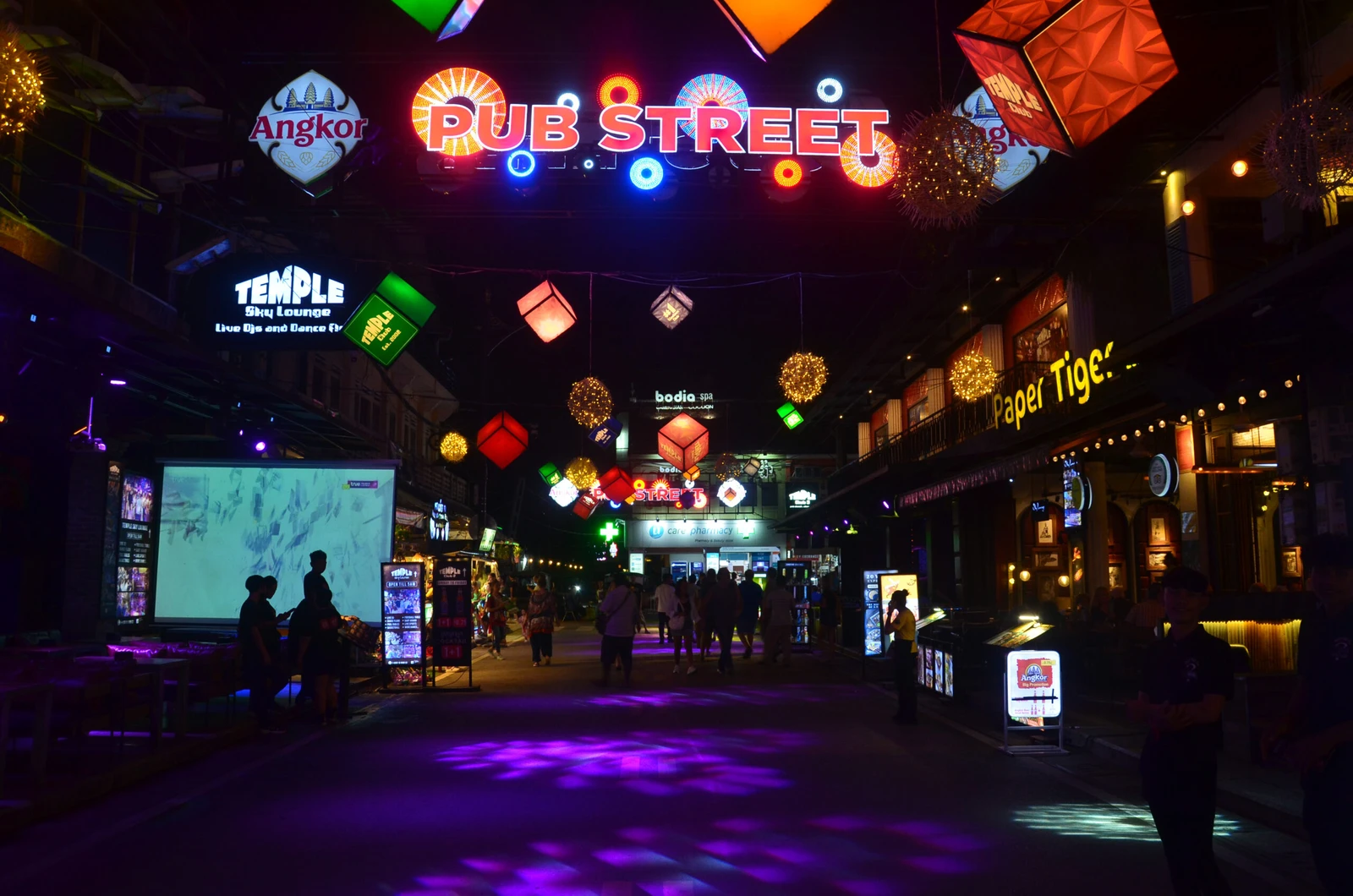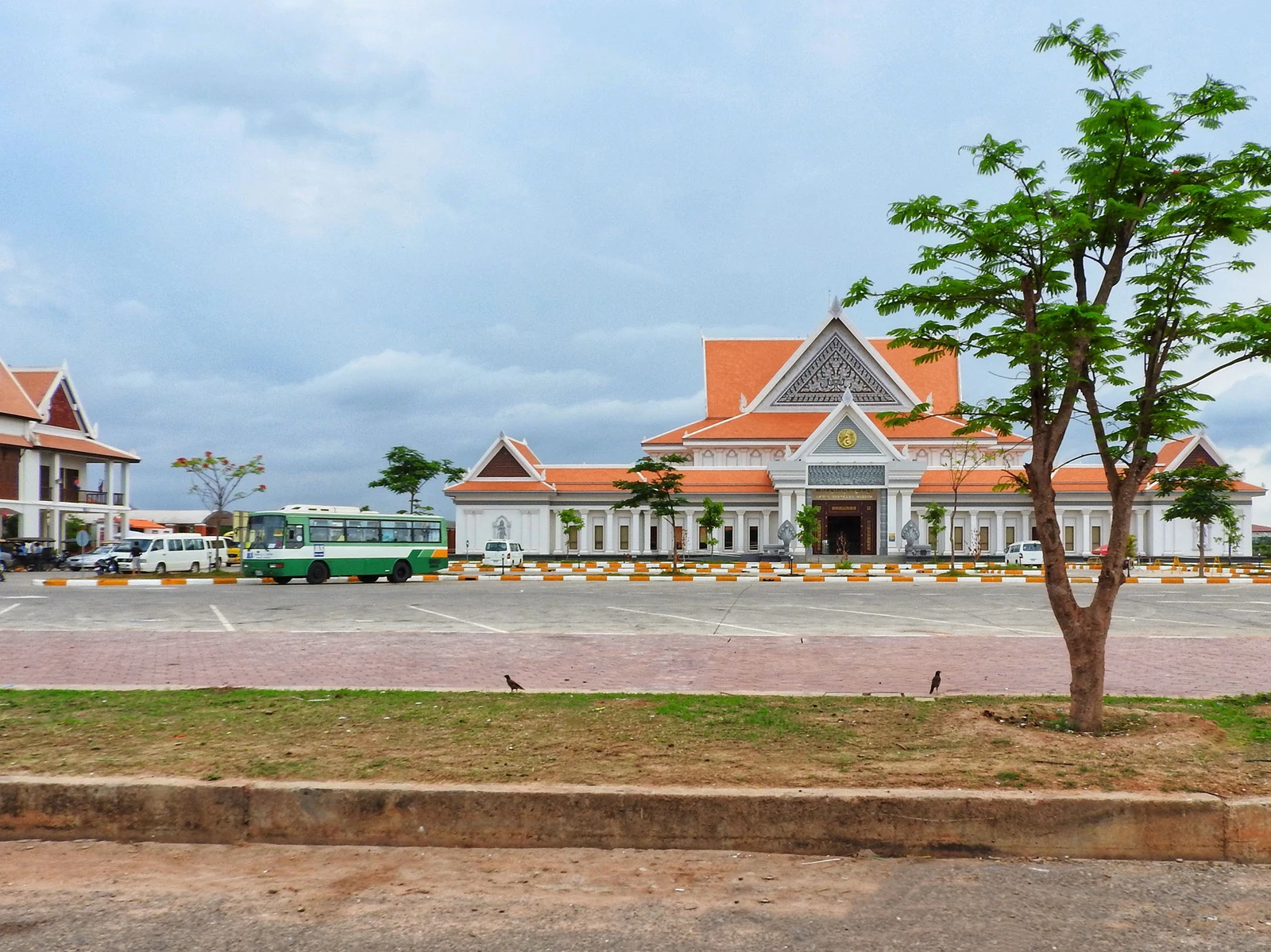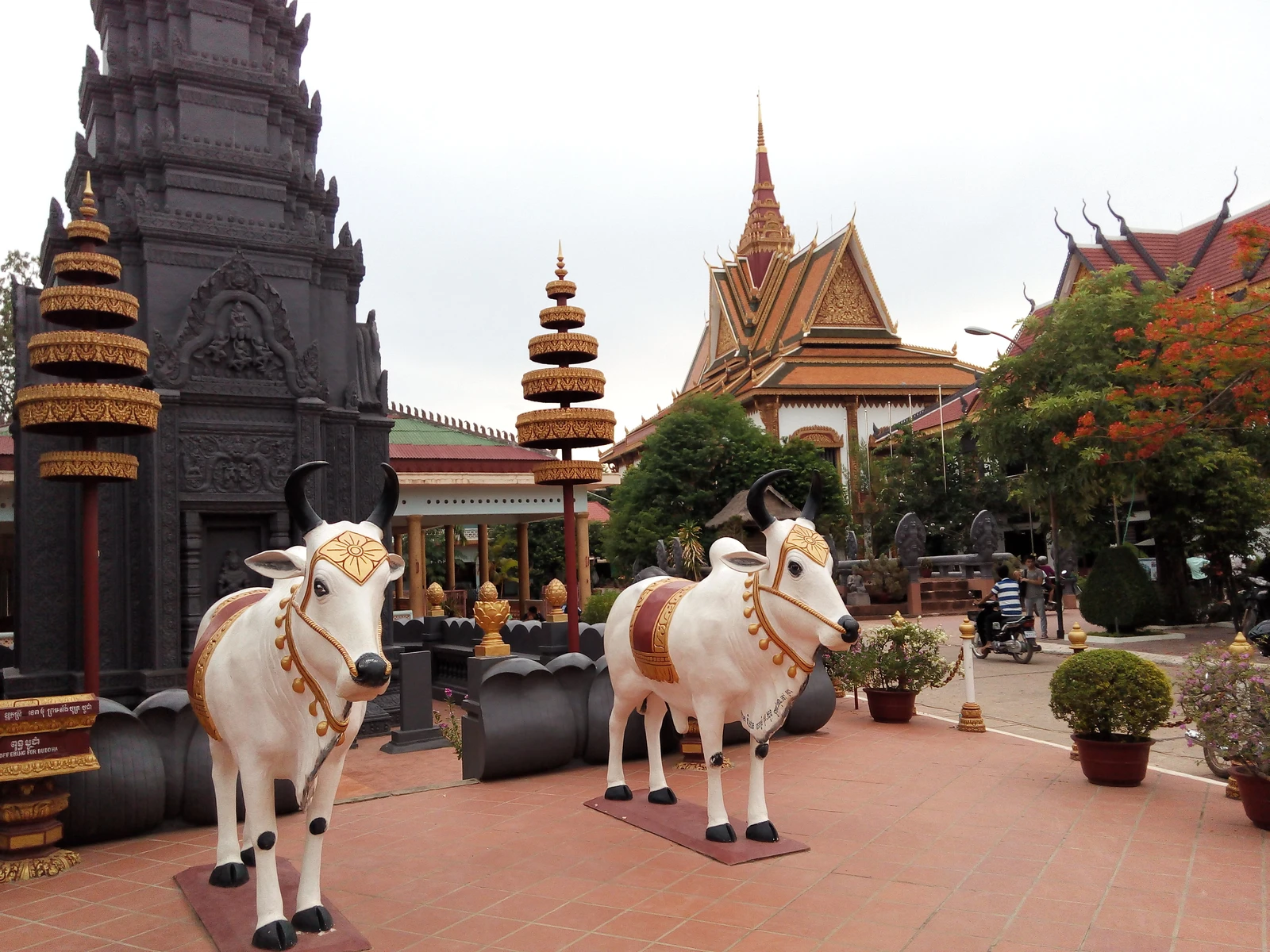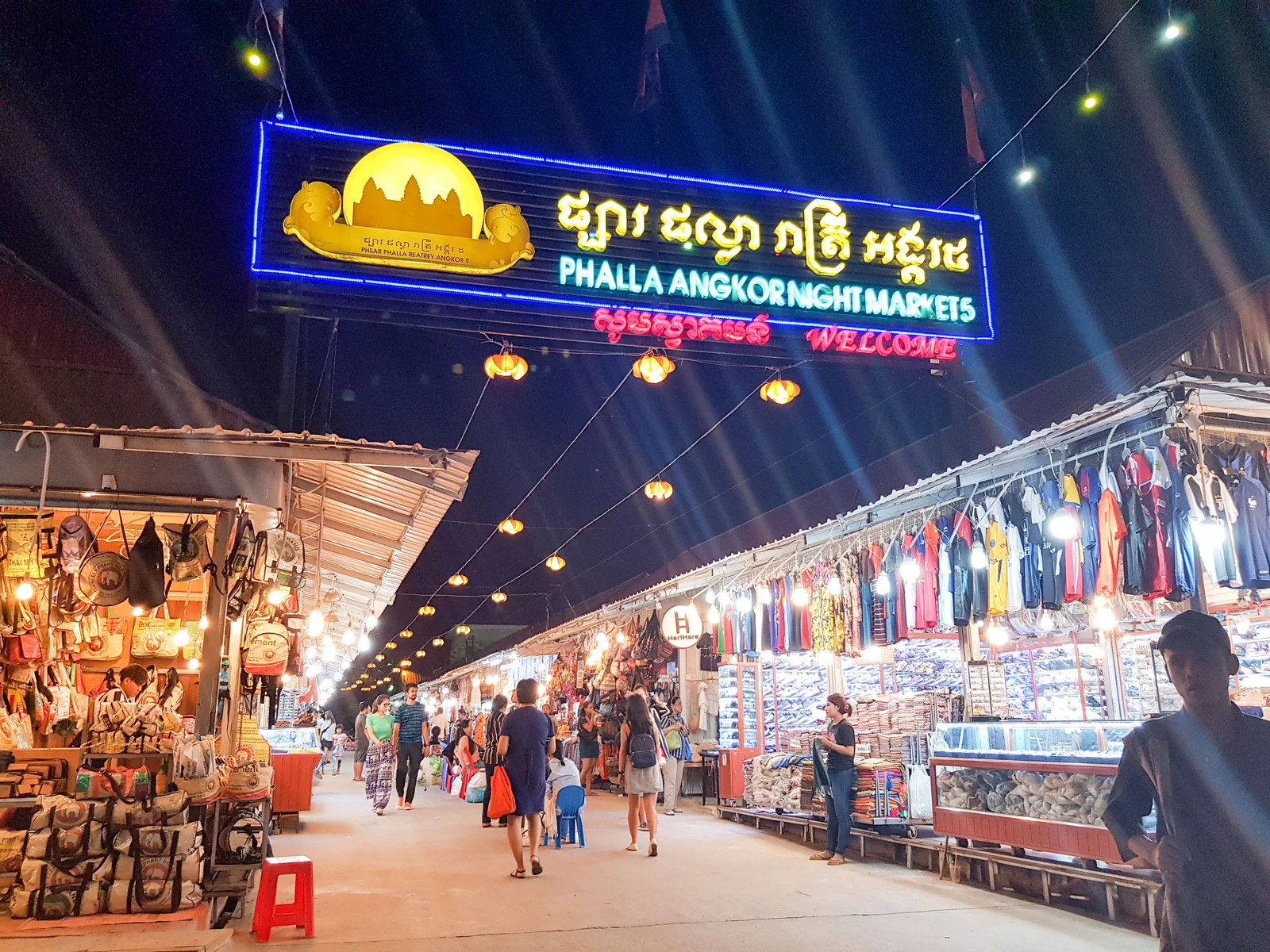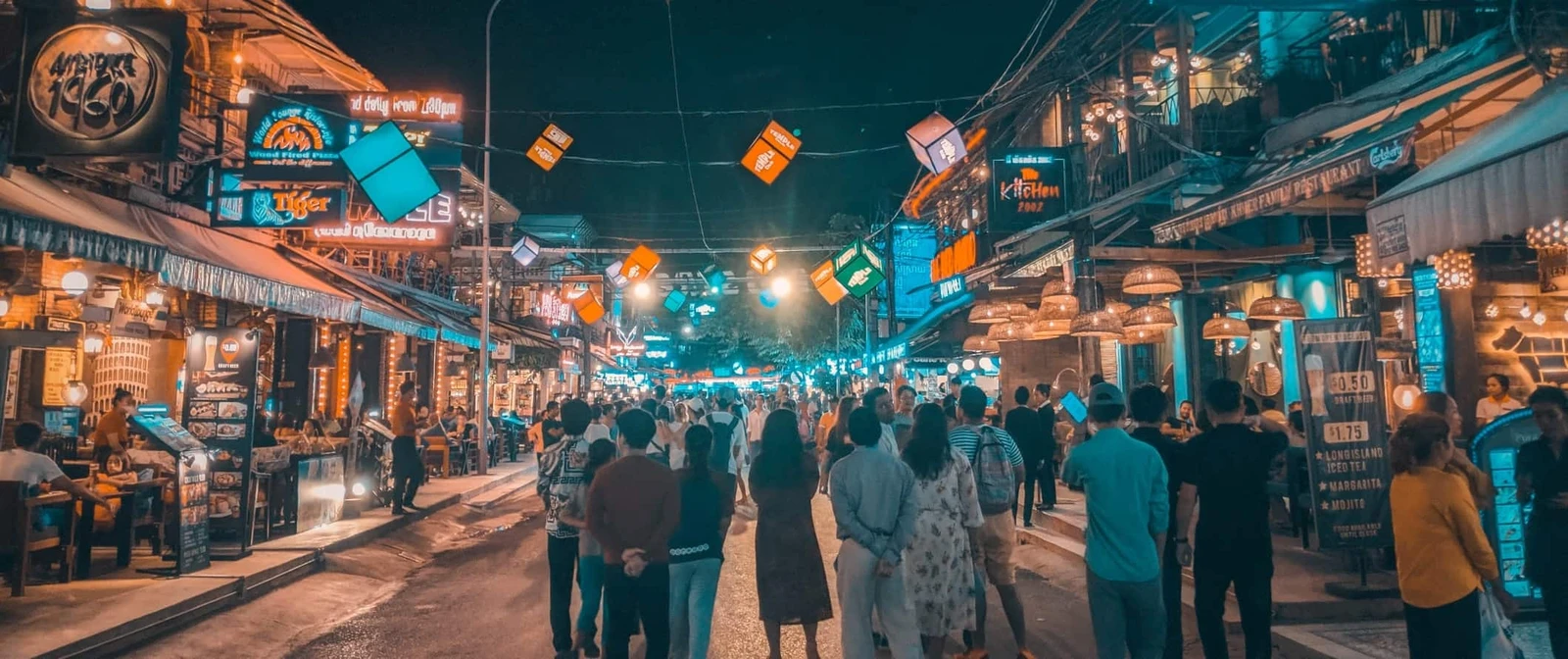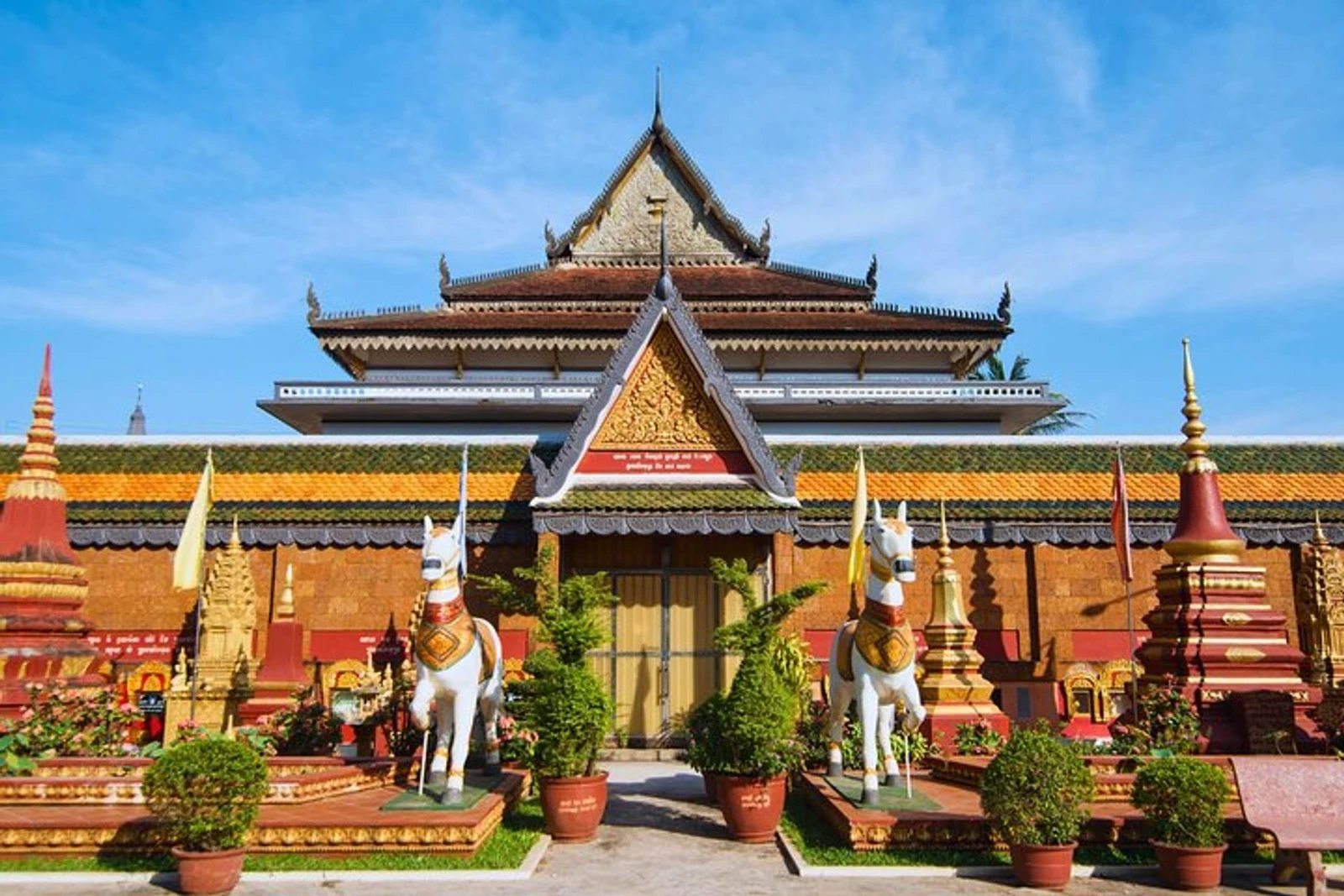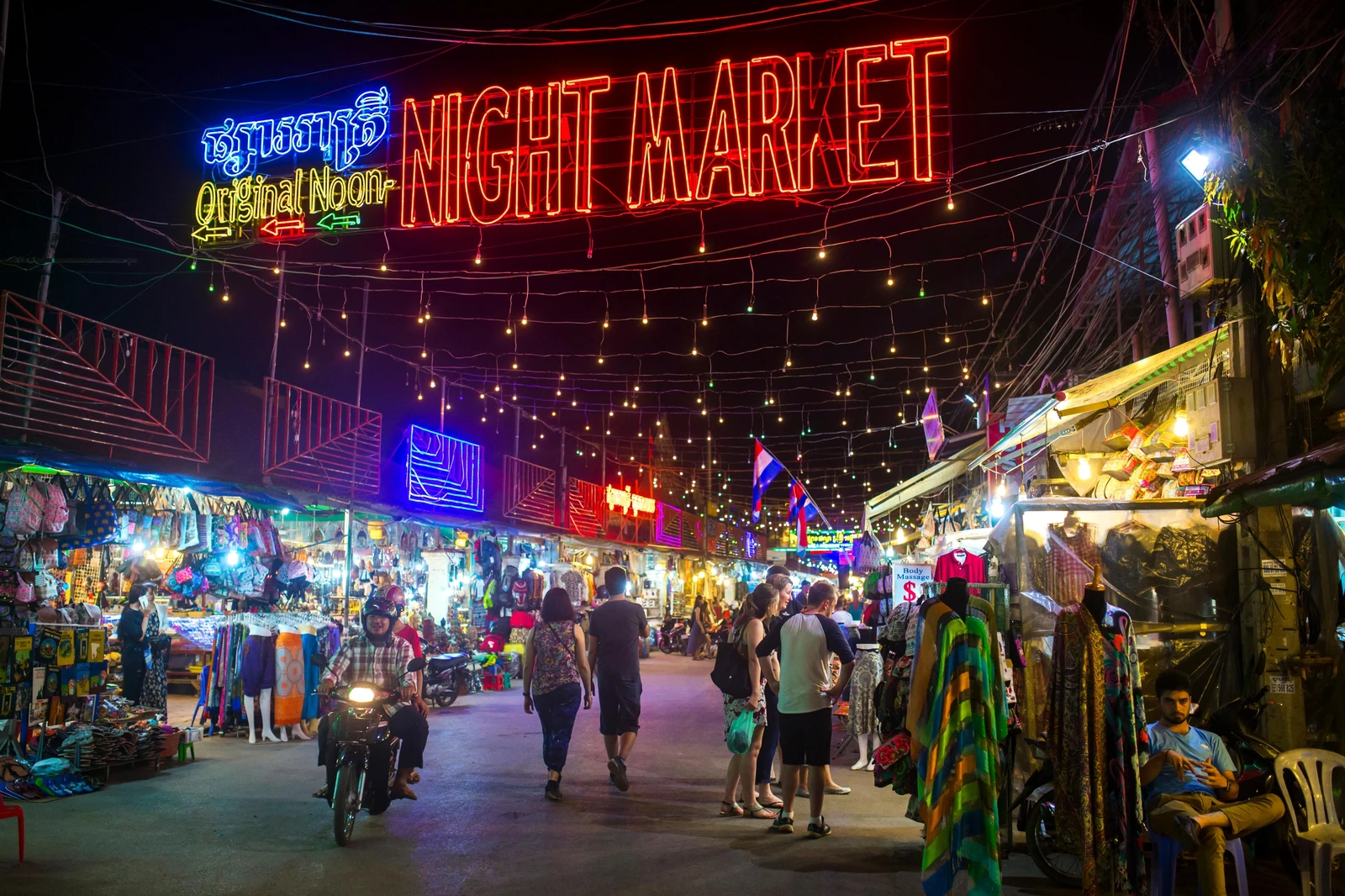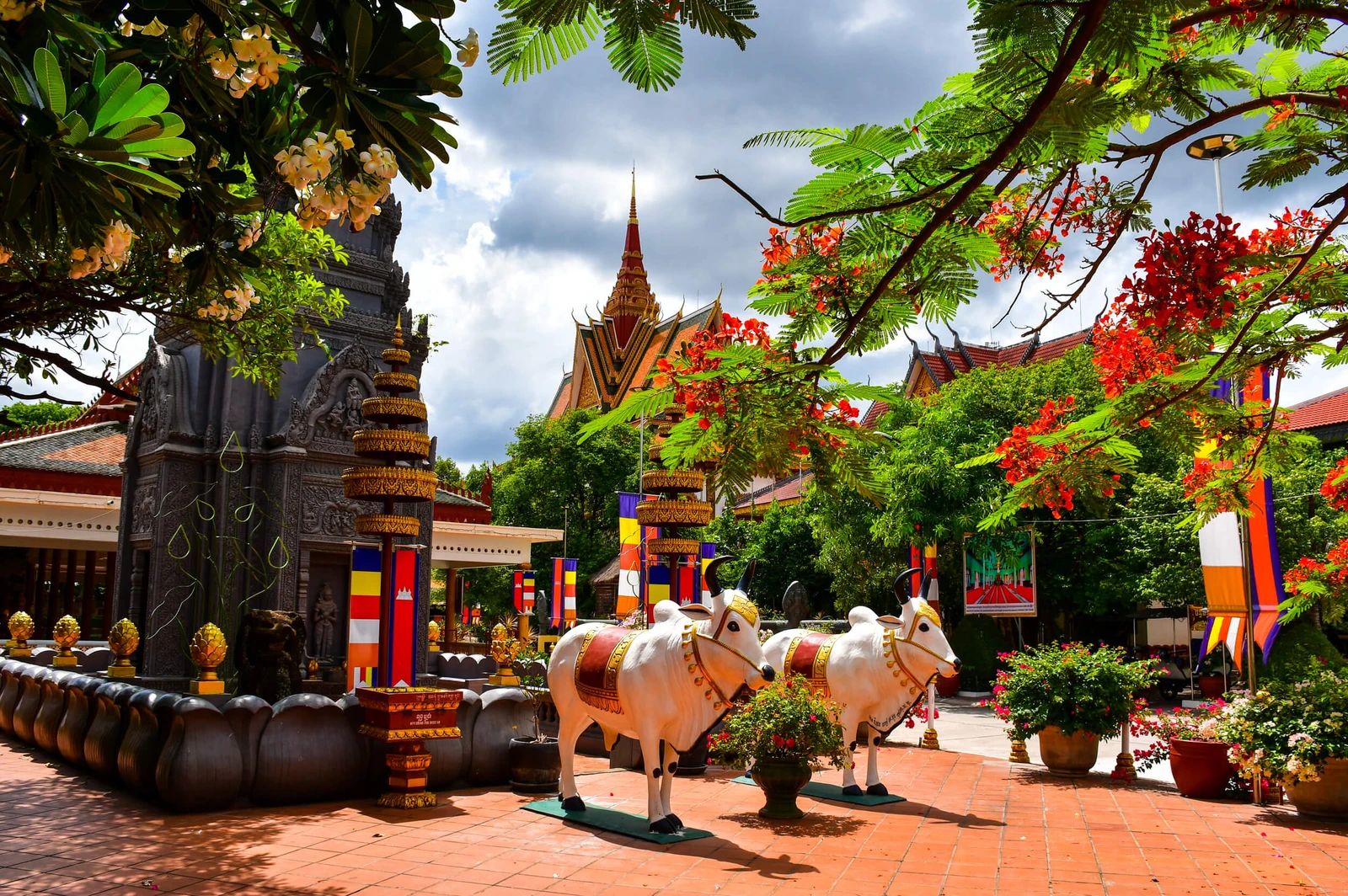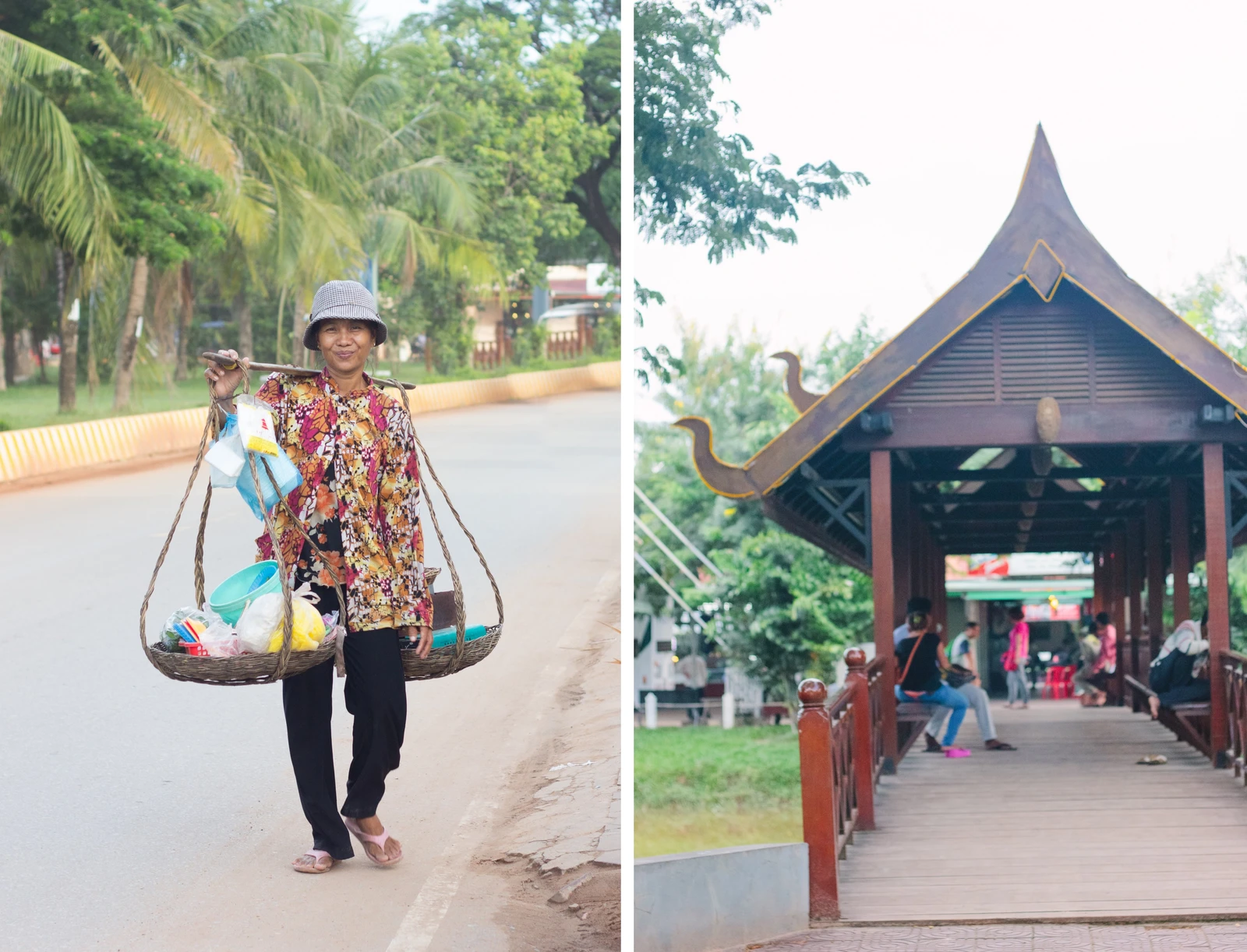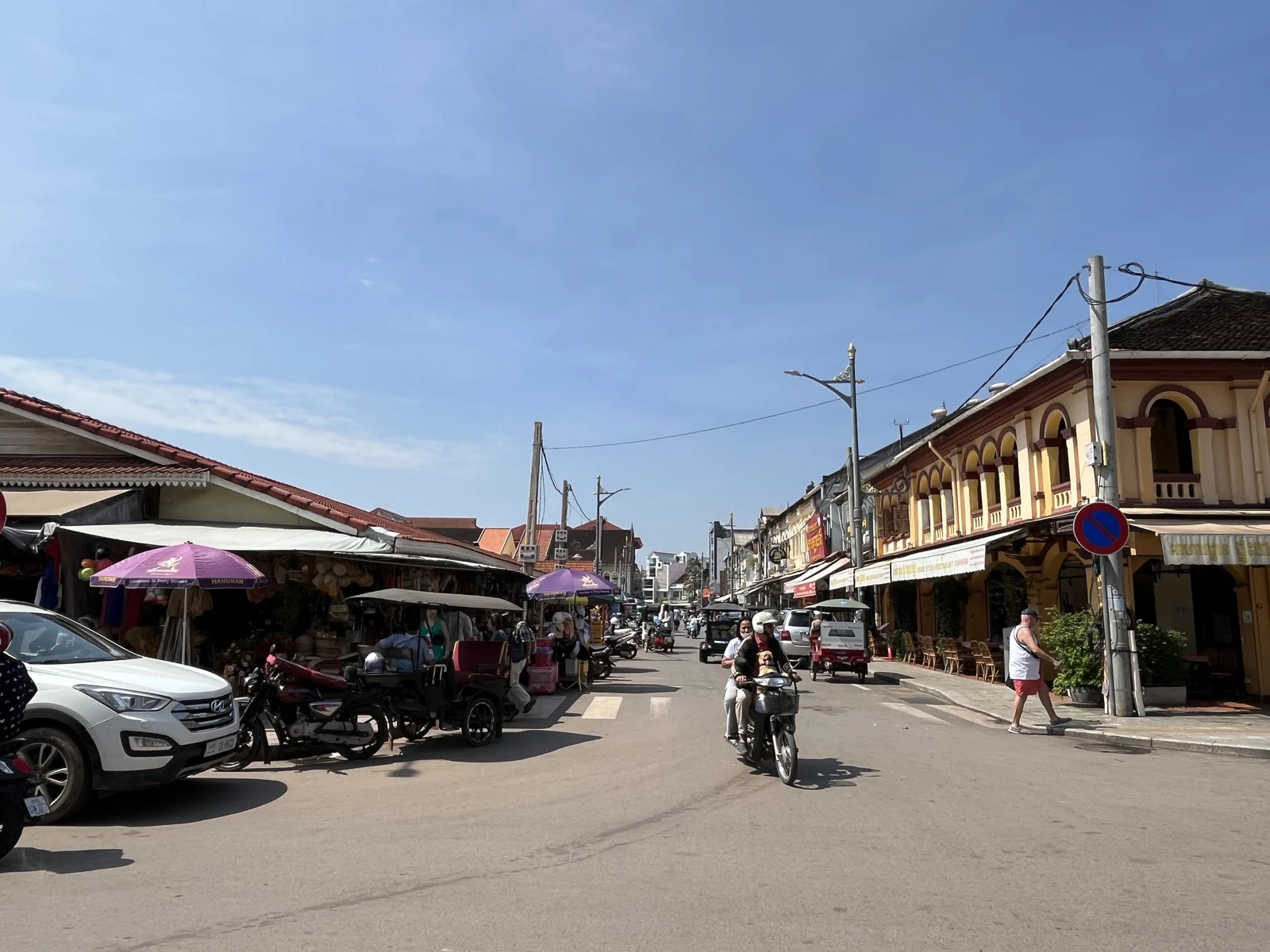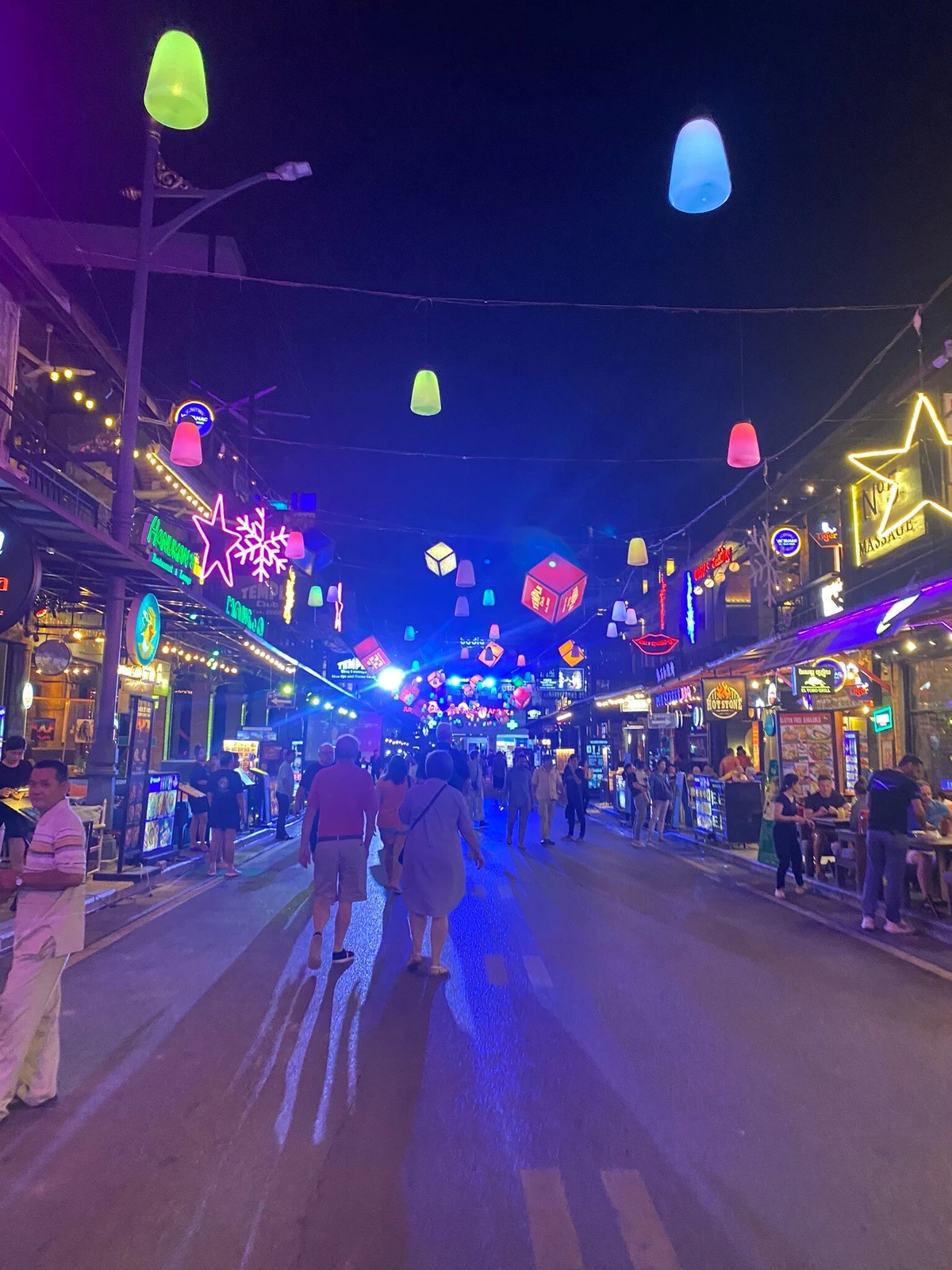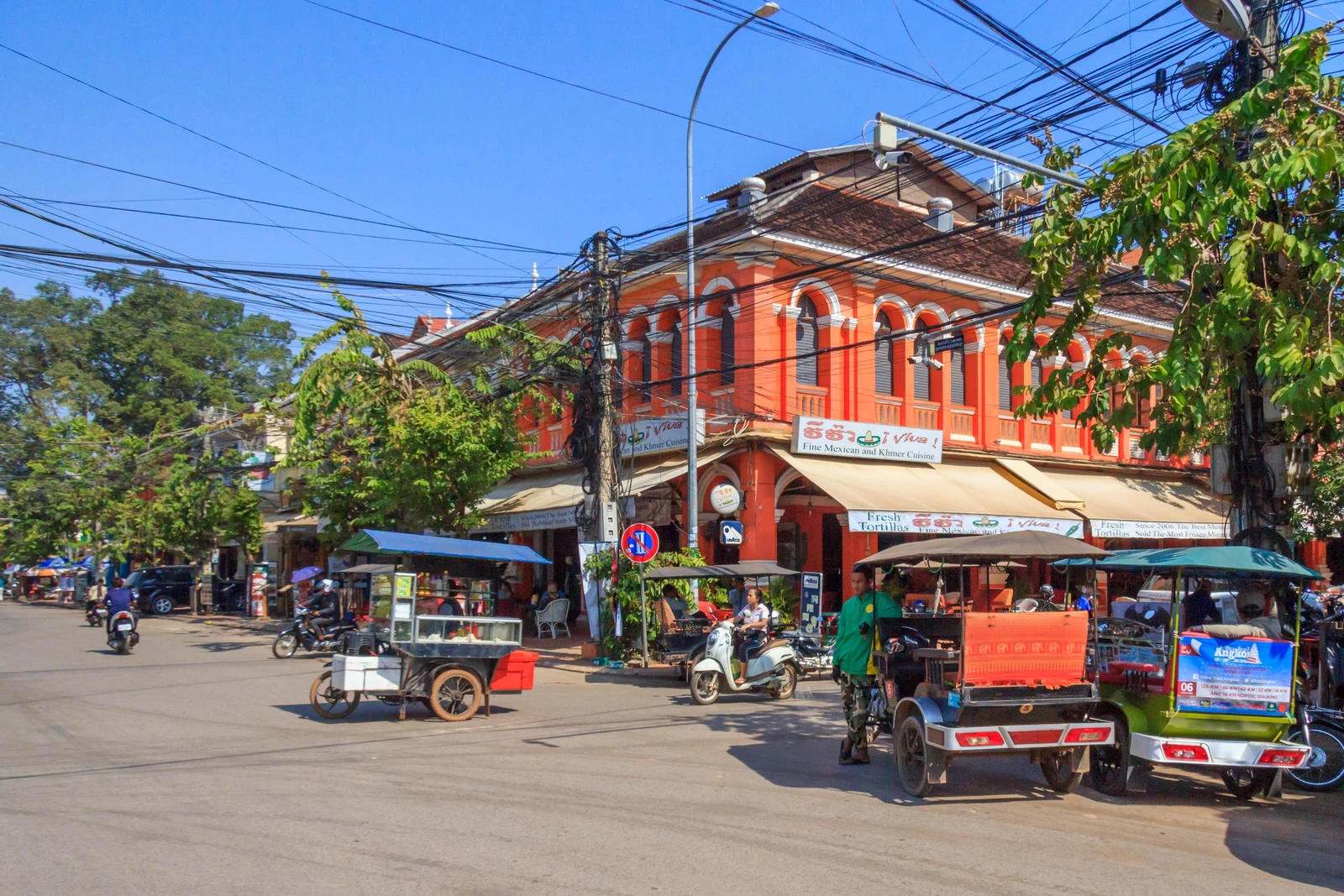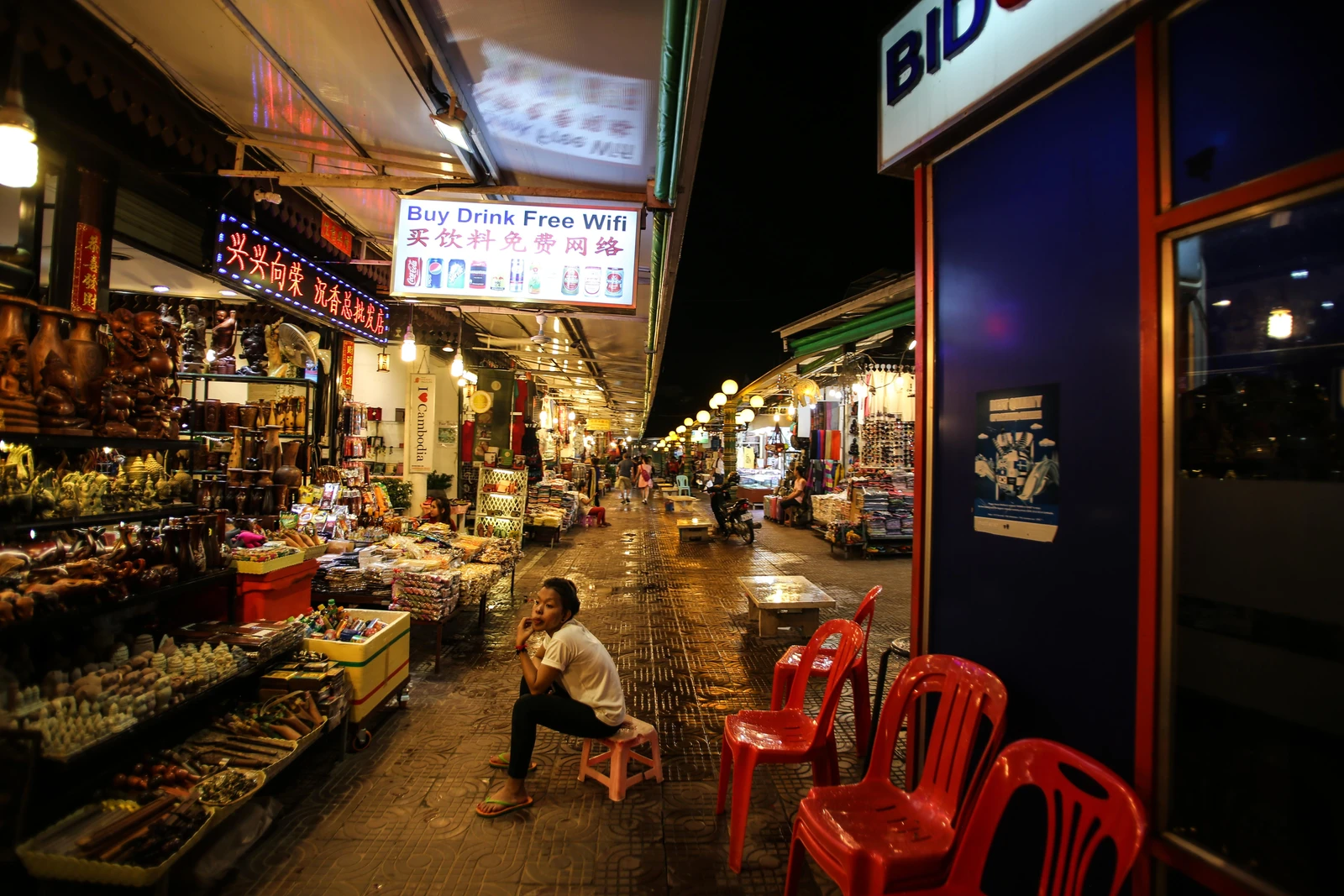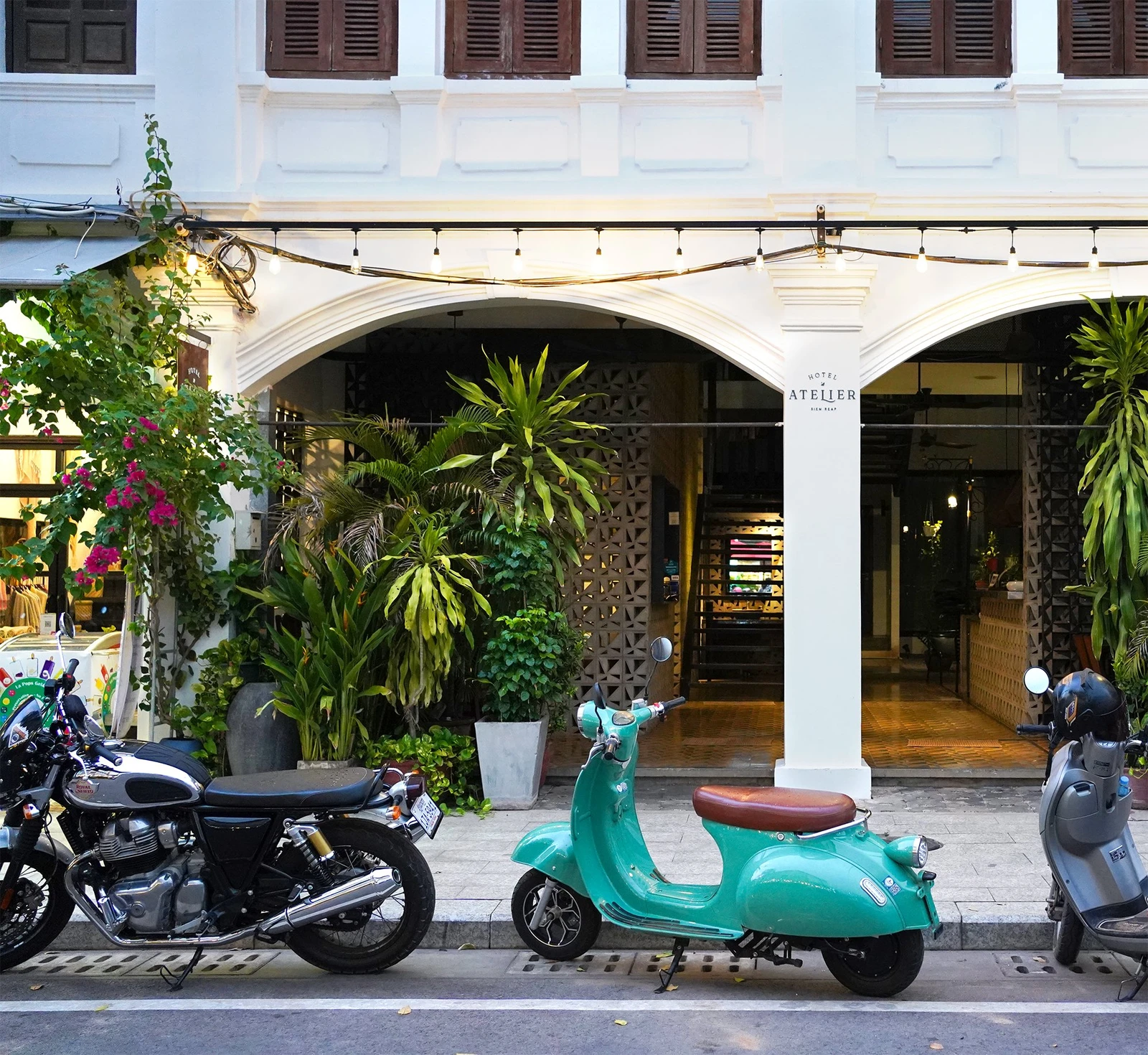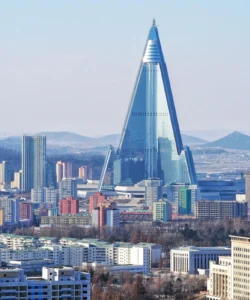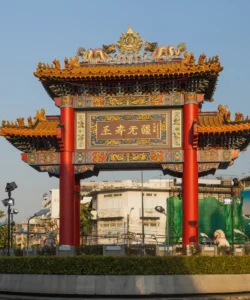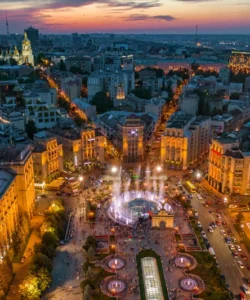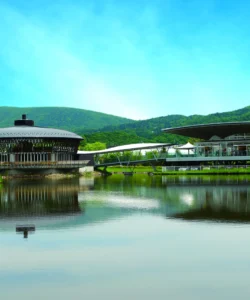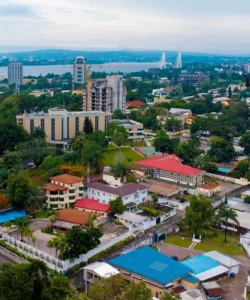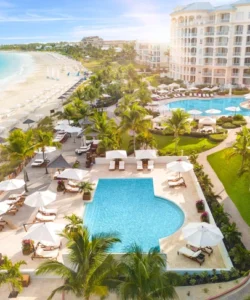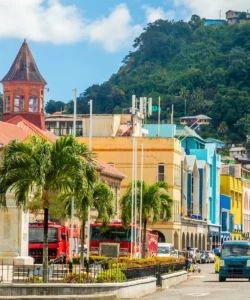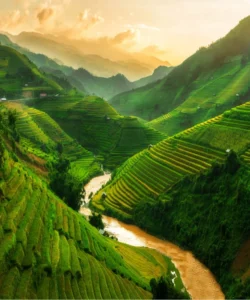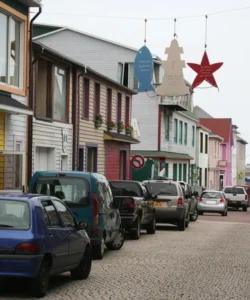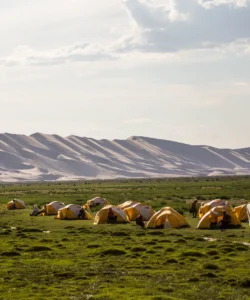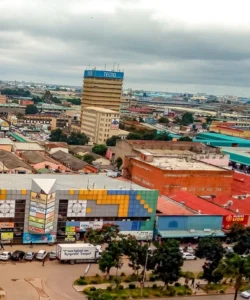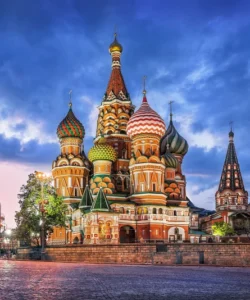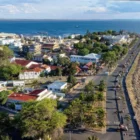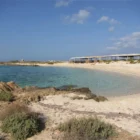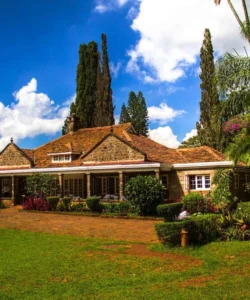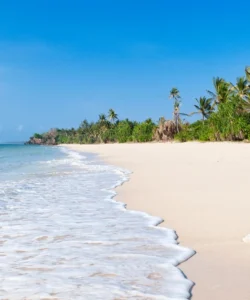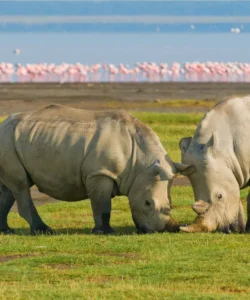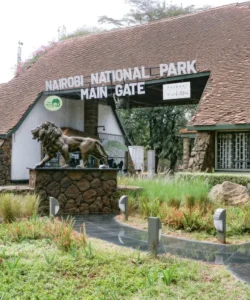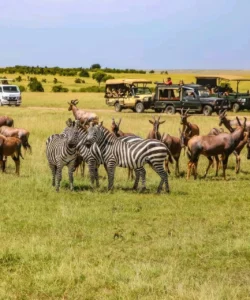Siem Reap is much more than just a city; it’s the vibrant and bustling gateway to the ancient wonders of Angkor, making it Cambodia’s primary tourist hub. While famous for its proximity to the iconic temples, Siem Reap itself offers a rich blend of Khmer culture, modern amenities, and a lively atmosphere.

Name: Siem Reap (Khmer: សៀមរាប, meaning “Siam Defeated” – referring to a historical conflict with Thailand)
Address: Siem Reap is the capital city of Siem Reap Province, located in northwestern Cambodia. It lies on the plains north of Tonlé Sap Lake and is approximately 6 kilometers (3.7 miles) south of the Angkor Archaeological Park.
How to Get There:
Siem Reap is easily accessible, especially for international travelers:
- By Air: The primary gateway is the new Siem Reap–Angkor International Airport (SAI). It offers direct flights from major regional hubs like Bangkok, Kuala Lumpur, Singapore, Ho Chi Minh City, and other cities in Southeast Asia and beyond. From the airport, it’s about a 50-minute drive to Siem Reap city center. Taxis, ride-hailing apps (Grab, PassApp), or pre-arranged hotel transfers are readily available.
- By Bus: Long-distance buses connect Siem Reap with Phnom Penh (the capital) and other major Cambodian cities. The journey from Phnom Penh takes about 5-7 hours. Reputable bus companies offer comfortable services.
- By Ferry: During the wet season (roughly June to October/November), a scenic but slower ferry service operates between Phnom Penh and Siem Reap via Tonlé Sap Lake. This offers a unique glimpse into rural Cambodian life but is not always reliable.
- By Car/Taxi: Private taxis can be hired from Phnom Penh or other Cambodian cities.
- Getting Around Siem Reap City: The city center is largely walkable. For longer distances or exploring outside the immediate core:
- Tuk-tuk: The most common and charming mode of transport. You can easily hire them for short rides or for full-day temple tours.
- Bicycle/Electric Bike: Available for rent, offering a flexible way to explore the city and even cycle to some of the closer temples.
- Ride-Hailing Apps: Grab and PassApp are widely used for taxis and tuk-tuks.
- Motorbike: Generally not recommended for tourists to self-drive due to traffic and safety.
Landscape and Architecture:
Siem Reap’s landscape is primarily urban, nestled on a flat plain, but its architecture is a fascinating blend of historical influences and contemporary development.
- Colonial and Chinese-Style Architecture: The Old French Quarter and the area around the Old Market retain charming examples of French-colonial and traditional Chinese-style architecture, particularly in the form of elegant shophouses and villas. Many of these have been beautifully restored into boutique hotels, restaurants, and shops.
- Traditional Khmer Elements: While less monumental than the Angkor temples, newer buildings and hotels often incorporate traditional Khmer architectural motifs (like steeply pitched roofs, Naga balustrades, and intricate carvings) in their design, reflecting local heritage.
- Riverfront and Green Spaces: The Siem Reap River meanders through the city, with a pleasant riverside promenade. The city also features public gardens and green spaces, offering a sense of calm amidst the bustling streets.
- Pub Street: This famous street is a dense concentration of modern and adapted shophouses, brightly lit with neon signs, housing numerous bars, restaurants, and nightclubs. Its architecture is purely functional for entertainment.
- Markets: Traditional markets like the Old Market (Phsar Chas) and Angkor Night Market feature a mix of local market stalls and more tourist-oriented craft shops.
- Angkor Archaeological Park (External to City, but defining): While not within the city limits, Siem Reap’s entire identity and landscape are defined by its role as the gateway to the Angkor Archaeological Park, a UNESCO World Heritage Site. This vast complex (400 sq km) includes:
- Angkor Wat: The quintessential temple-mountain, a masterpiece of Khmer architecture.
- Angkor Thom: An ancient walled city containing temples like the enigmatic Bayon (famous for its serene stone faces) and the Terrace of the Elephants.
- Ta Prohm: Known as the “Tomb Raider temple,” where giant tree roots dramatically intertwine with ancient stone structures, creating an evocative fusion of nature and history.
- Numerous other temples (e.g., Banteay Srei, Preah Khan, Neak Pean, Phnom Bakheng) each with distinct architectural styles, carvings, and historical significance, reflecting the diverse periods of the Khmer Empire.
What Makes It Famous:
- Gateway to Angkor Archaeological Park: This is Siem Reap’s undisputed primary claim to fame. It serves as the base for exploring the magnificent Angkor Wat and the vast complex of ancient Khmer temples, which are UNESCO World Heritage Sites and considered among the greatest archaeological wonders of the world.
- UNESCO World Heritage Site (via Angkor): Siem Reap is intrinsically linked to the UNESCO status of the Angkor complex, a testament to the architectural brilliance and cultural significance of the Khmer Empire.
- Vibrant Tourism Hub: It’s a bustling and well-developed tourist city with a wide range of accommodation (from budget guesthouses to luxury resorts), dining options, and tour services specifically catering to visitors of the Angkor temples.
- Lively Nightlife (Pub Street): “Pub Street” is a famous draw for its energetic nightlife, offering a wide array of bars, clubs, and restaurants that come alive after sunset.
- Cultural Experiences Beyond Temples: Siem Reap offers numerous cultural activities, including Apsara dance performances, visits to local markets (like the Old Market and Made in Cambodia Market), artisan workshops (e.g., Angkor Silk Farm, Artisans d’Angkor), and the Phare Cambodian Circus (a unique blend of traditional and modern theater, music, dance, and acrobatics).
- Proximity to Tonlé Sap Lake: It’s a departure point for tours to the Tonlé Sap Lake, Southeast Asia’s largest freshwater lake, where visitors can explore unique floating villages and observe traditional Cambodian life.
- Community Engagement: Many tourism initiatives in Siem Reap support local communities, including projects addressing landmine clearance (Cambodia Landmine Museum) and providing education and livelihoods.
Differences from Some Other Wonders:
- Urban Gateway to Ancient Wonders: Unlike Angkor Wat itself (a singular temple), or other ancient cities that are largely ruins (like Pompeii), Siem Reap is a thriving modern city that acts as the essential urban gateway to a vast, separate ancient archaeological complex. Its fame is derivative of, but essential to, the experience of visiting Angkor.
- “Base Camp” for Exploration: While it has its own attractions, its core function as a “base camp” for exploring the Angkor temples is paramount, providing all the necessary infrastructure and services for this pursuit.
- Blend of Ancient and Contemporary: Siem Reap uniquely offers a direct contrast between the ancient, spiritual grandeur of the Angkor temples and its own modern, lively urban environment with contemporary dining, nightlife, and arts scenes.
- Not a Singular Architectural Icon: Unlike the Petronas Twin Towers or Marina Bay Sands, Siem Reap’s architectural fame is not centered on a single, dominant modern structure but rather on its collection of well-preserved colonial/traditional buildings and its proximity to the ancient wonders of Angkor.
- Focus on Khmer Culture (Historical and Living): While other places might have multicultural heritage (George Town, Malacca City), Siem Reap’s fame is deeply rooted in showcasing and preserving ancient Khmer civilization through the temples and contemporary Cambodian culture through its markets, arts, and performances.
- Dynamic Tourist Economy: The city’s economy is almost entirely driven by tourism, making it a very dynamic and evolving place shaped by the needs and desires of international visitors.

